5-day trip to Nepal
5-day trip to Nepal
Hello, fellow adventurers, and welcome back to the blog! This time, I'm thrilled to share tales from my recent escape to Nepal, the breathtaking landlocked gem of South Asia. Tucked away in the mighty Himalayas, with Tibet to its north and India embracing it on three sides, Nepal isn't just beautiful – it's a world of extremes. Imagine descending from the fertile Terai plains in the south, only to ascend towards the planet's highest peaks, including the iconic Mount Everest, which is just one of eight of the world's ten tallest mountains found here! Beyond its stunning landscapes, Nepal pulsates with a rich and diverse culture, a vibrant tapestry woven from countless ethnic groups and profound Hindu and Buddhist traditions. It's truly a spiritual heartland, being the birthplace of Buddha in Lumbini and home to revered Hindu pilgrimage sites like Pashupatinath. Get ready, because I'll be diving into more details on these incredible places as we journey through them together!
Days
Day 1: Arrival in Kathmandu
Arrival in Kathmandu and visit to Budhanilkantha temple
We arrived early, making a swift check-in at our hotel, conveniently located just a stone's throw from the airport. With the entire day stretching before us, our first order of business was to hire a cab and make our way to the fascinating Budhanilkantha Temple, also known as the Jalnarayan Temple. Nestled at the foothills of Shivapuri Hill near Kathmandu, this renowned open-air Hindu temple is dedicated to Lord Vishnu and stands as one of Nepal's most significant and intriguing religious sites. Its primary draw is undoubtedly the colossal reclining statue of Lord Vishnu: a magnificent 5-meter (16.4 feet) long figure meticulously carved from a single block of black basalt. He lies in a serene, reclining pose, appearing to float within a recessed pond (symbolizing the cosmic ocean), supported by the coiled body of the multi-headed cosmic serpent, Shesha (or Ananta). In his four hands, he gracefully holds the symbolic conch shell, discus (chakra), mace (gada), and a lotus flower. Adding to its mystique, a popular belief suggests a connection between the pond's water and the sacred Gosaikunda Lake, a site linked to Lord Shiva – perhaps explaining the temple's intriguing name for a Vishnu shrine. After our awe-inspiring visit, we returned to the hotel for a much-needed quick nap. As evening approached, we ventured out for a leisurely stroll around the sacred Pashupatinath Temple area and along the tranquil Bagmati River. However, our peaceful evening was cut short as sudden heavy rain turned the weather into a tempest, sending us back to the hotel.
Visit
-
Tribhuvan International Airport (KTM)
-
Pashupatinath Temple
-
Budhanilkantha Temple
-
Eat
-
Hotel Mirage Regency - Kathmandu
-
Paawan Sweets Battisputali
Stay
-
Hotel Mirage Regency - Kathmandu
Photos

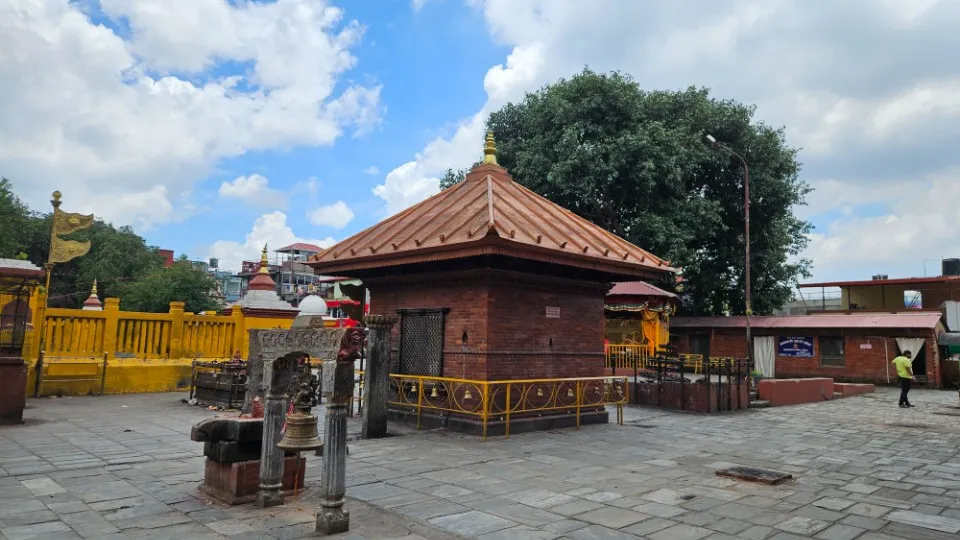
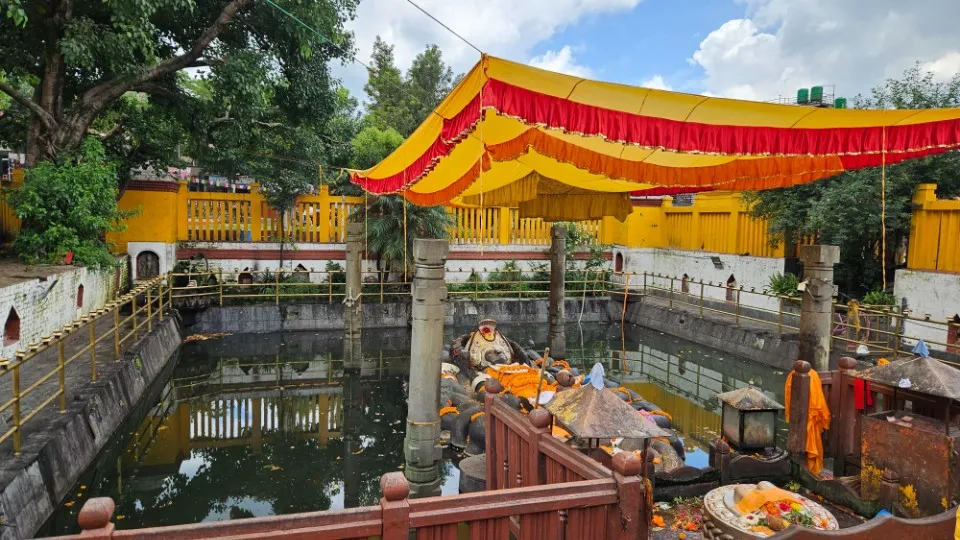
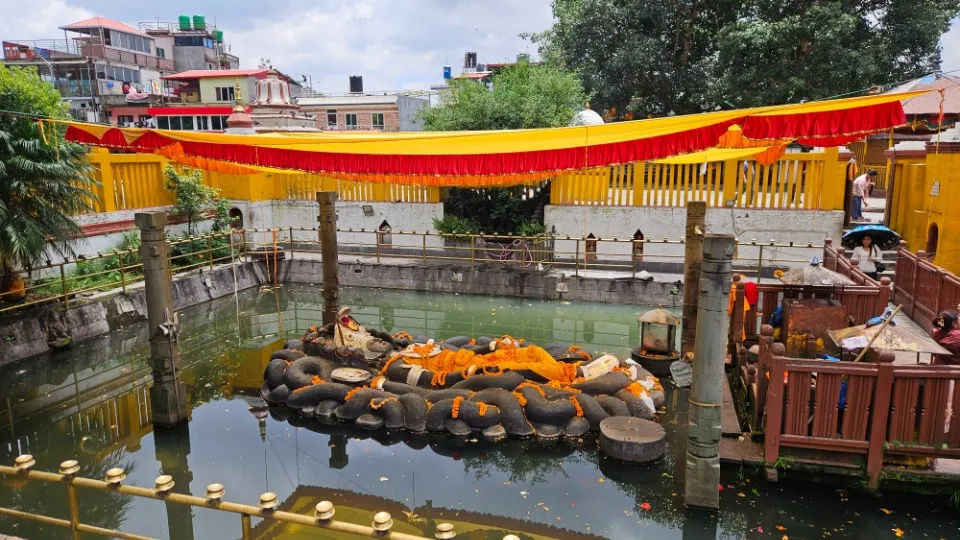
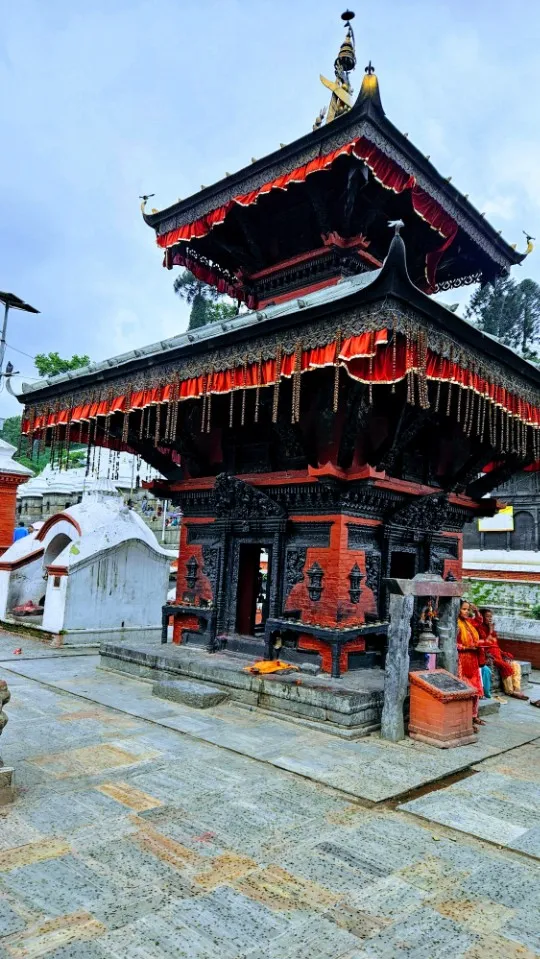
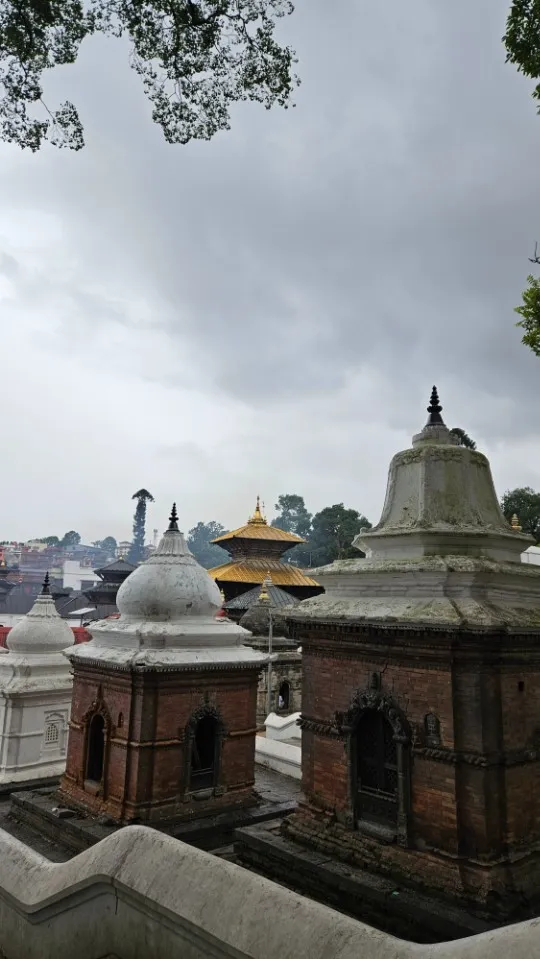
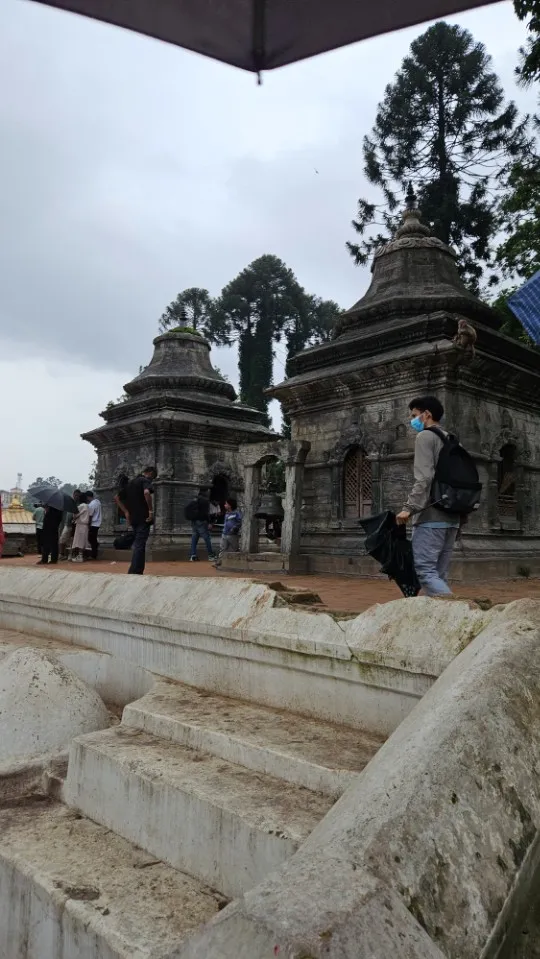
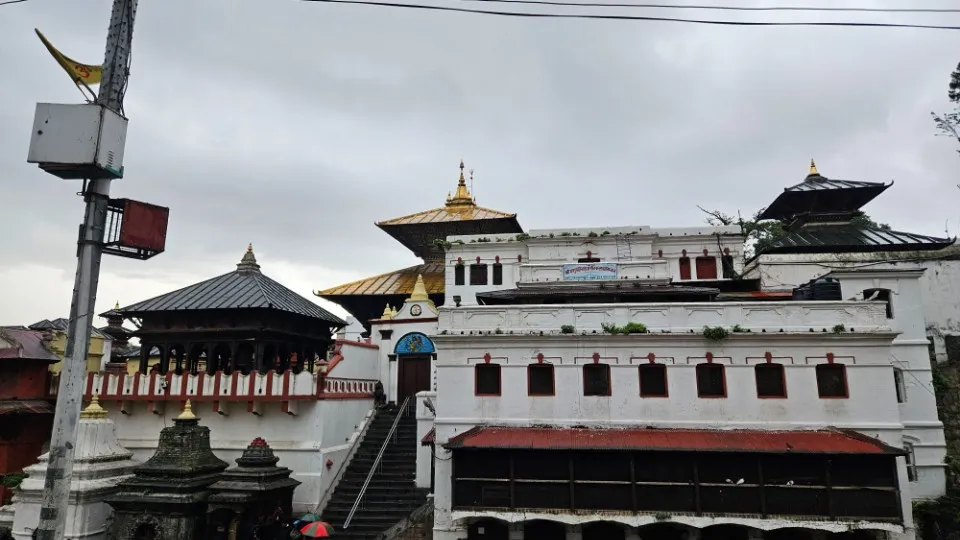
Day 2: Kathmandu sightseeing
Diving Deep into Kathmandu's Soul: A Day of Temples and Timeless Tales
Get ready to virtually journey with me through the heart of Kathmandu Valley, because our first full day was an absolute whirlwind of spiritual grandeur and historical marvels. We had an early morning mountain flight. A small jet-like flight takes you to view the majestic Himalayas for an hour-long journey. The Mount Everest and the Gauri Shankar peaks are the highlight here. The flight starts from Kathmandu airport and we witnessed some breathtaking views of the Himalayas. This was one memorable flight personally, After the flight, we returned to our hotel to freshen up and visit other places in Kathmandu. Our initial stop? The profoundly sacred Pashupatinath Temple. Nestled serenely on the banks of the holy Bagmati River, this isn't just any temple; it's one of the most revered Hindu sites in all of South Asia, dedicated to Lord Shiva as Pashupati, the "Lord of Animals." The main temple itself is a vision in the distinctive Nepalese pagoda style, boasting a two-tiered golden roof, shimmering gilded spires, and a stunning array of intricately carved wooden rafters. While only practicing Hindus can enter the inner sanctum to witness the unique four-faced Shiva Lingam (representing different facets of Shiva with a fifth, ethereal face on top), the atmosphere outside is equally powerful. We observed the solemn and deeply moving cremation rituals at the ghats along the Bagmati River – a poignant reminder of Hindu beliefs in moksha, the liberation from the cycle of rebirth. After absorbing the profound energy, we moved on. Next, we found ourselves immersed in the tranquility of the Boudhanath Stupa. This isn't just one of Nepal's largest stupas; it's a vital, pulsing heart of Tibetan Buddhism and a proud UNESCO World Heritage Site. Its massive white dome, stretching an impressive 100 feet in diameter, felt like a silent, majestic symbol of the universe itself, guiding us towards enlightenment. Above the dome, the all-seeing eyes of the Buddha gazed out from the harmika, radiating wisdom and compassion, with that intriguing curling symbol between them hinting at unity. Those thirteen golden steps? They represent the journey of enlightenment – quite a visual metaphor! The area around Boudhanath is a living testament to Tibetan culture; after the 1959 uprising, many Tibetan refugees found solace here, creating a vibrant hub of monasteries, charming restaurants, guesthouses, and artisan shops. The air hummed with chanted mantras and the gentle flutter of prayer flags – a truly immersive experience. Our spiritual journey continued uphill to the captivating Swayambhunath Stupa, affectionately known to many as the "Monkey Temple." Perched majestically atop a hill overlooking the entire Kathmandu Valley, this ancient site beautifully blends Buddhist and Hindu traditions. Its name, "Swayambhu," meaning "self-existent," refers to the legend of its miraculous emergence from a primordial lake. And yes, the "Monkey Temple" nickname is well-deserved! Hundreds of playful rhesus macaques freely roam the complex, considered sacred and believed to be manifestations of a Bodhisattva's ancient head lice – quite a unique connection! We bravely ascended the long, steep 365 steps to the main platform, and let me tell you, the effort was absolutely worth it for the breathtaking panoramic views of the entire valley. It's truly a place where spiritual seekers and curious tourists alike find common ground. Of course, all that exploration builds an appetite, so we paused for a delicious local lunch mid-day before heading to our final grand stop: Patan Durbar Square. Located in Lalitpur, one of Kathmandu Valley's three ancient cities, this magnificent royal square is another stunning UNESCO World Heritage Site and a living museum of Newar architecture, art, and craftsmanship. This was once the royal palace complex of the Malla kings, and stepping into it felt like stepping back in time to the 16th and 17th centuries, when art truly flourished here. The square is organized around three main courtyards: the grand Mul Chowk for royal ceremonies, the exquisite Sundari Chowk with its remarkable Tusha Hiti stone bath, and Keshav Narayan Chowk, which now thoughtfully houses the Patan Museum with its incredible collection of bronze statues. Temples dedicated to both Hindu and Buddhist faiths dot the square, a beautiful testament to Nepal's religious harmony. You can still see the visible marks of the devastating 2015 earthquake here, with ongoing restoration efforts a poignant reminder of the country's resilience. After a day packed with awe-inspiring sights and profound spiritual encounters, our feet (and minds!) were happily exhausted. We returned to our hotel, ready for a much-needed, well-deserved sleep, dreaming of all the wonders we'd witnessed.
Visit
-
Mountain Flight Nepal
-
Pashupatinath Temple
-
Boudhanath
-
Swayambhunath
-
Patan Durbar Square
-
Eat
-
Sangam Sweets & Snacks
-
Hotel Mirage Regency - Kathmandu
Stay
-
Hotel Mirage Regency
Photos
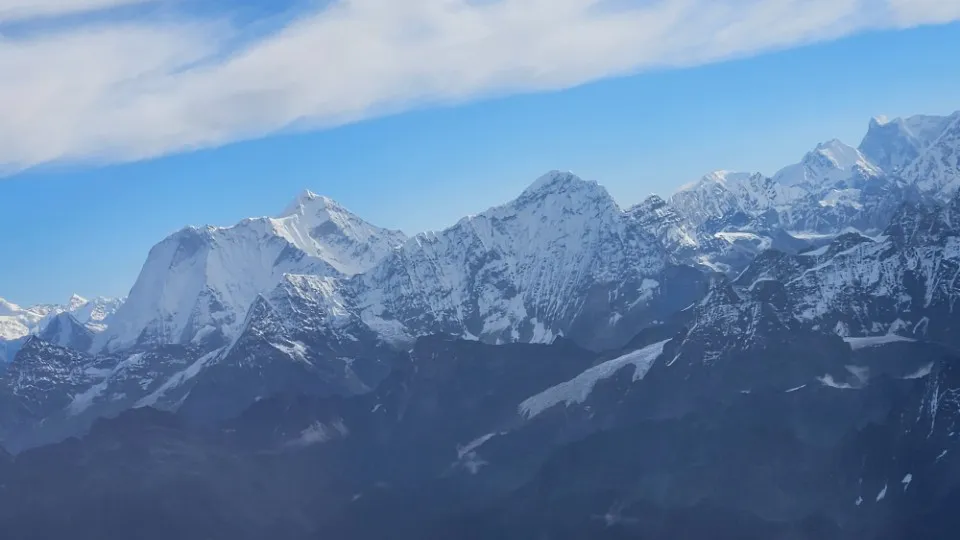

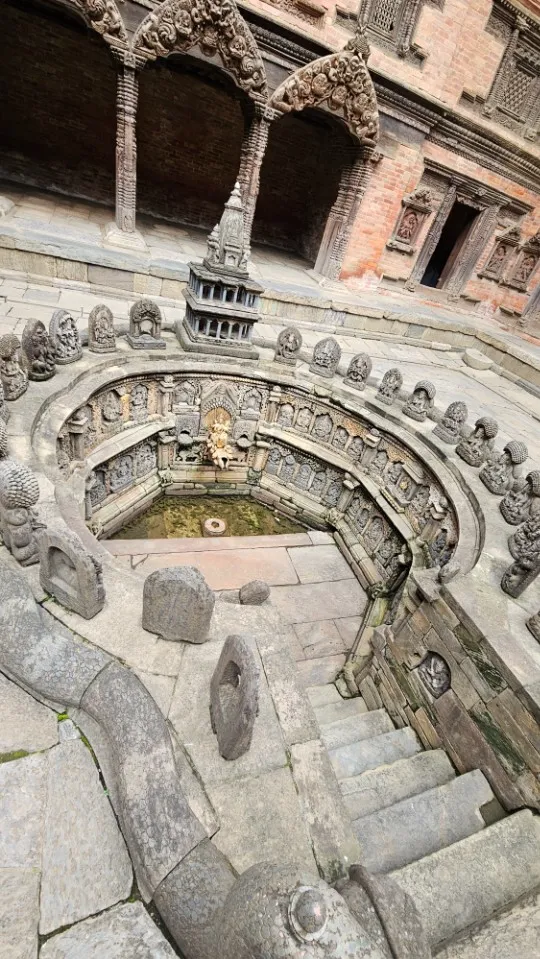
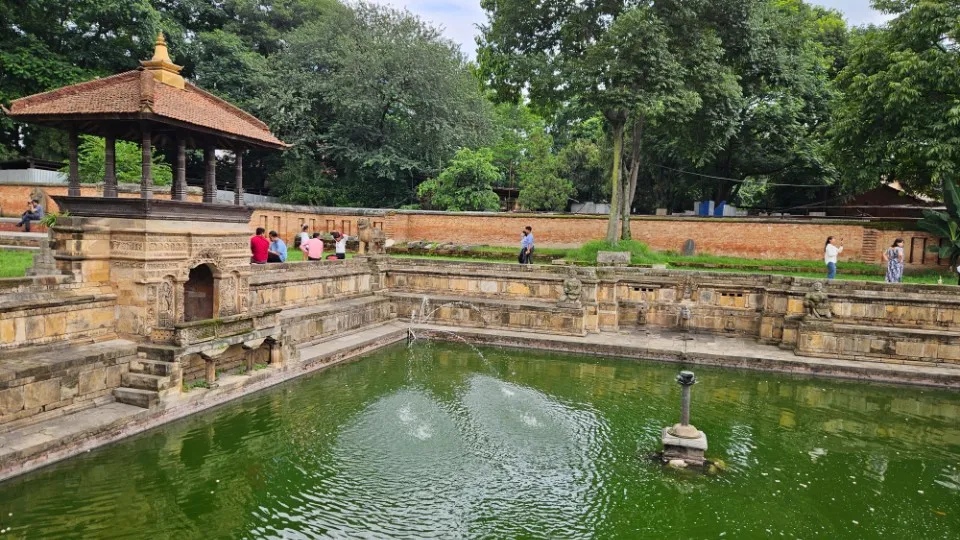
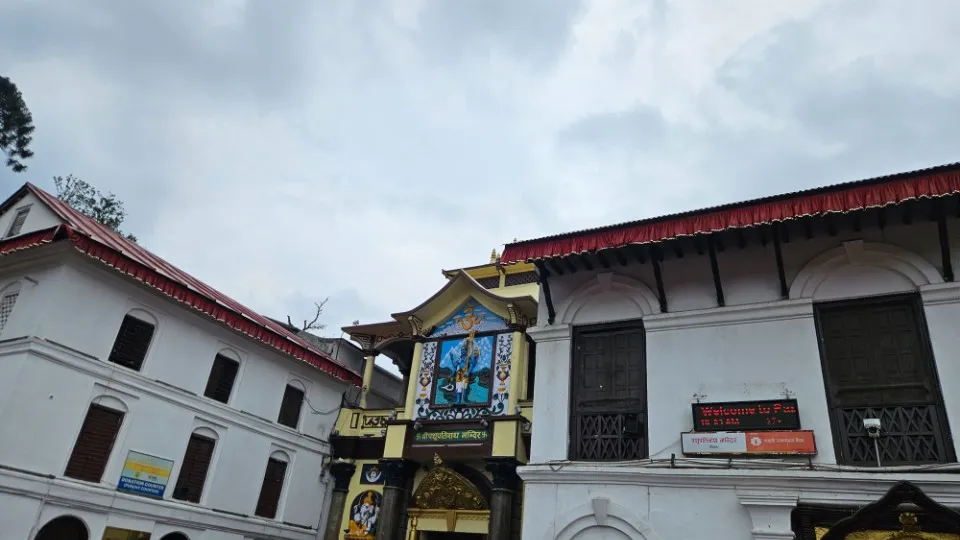
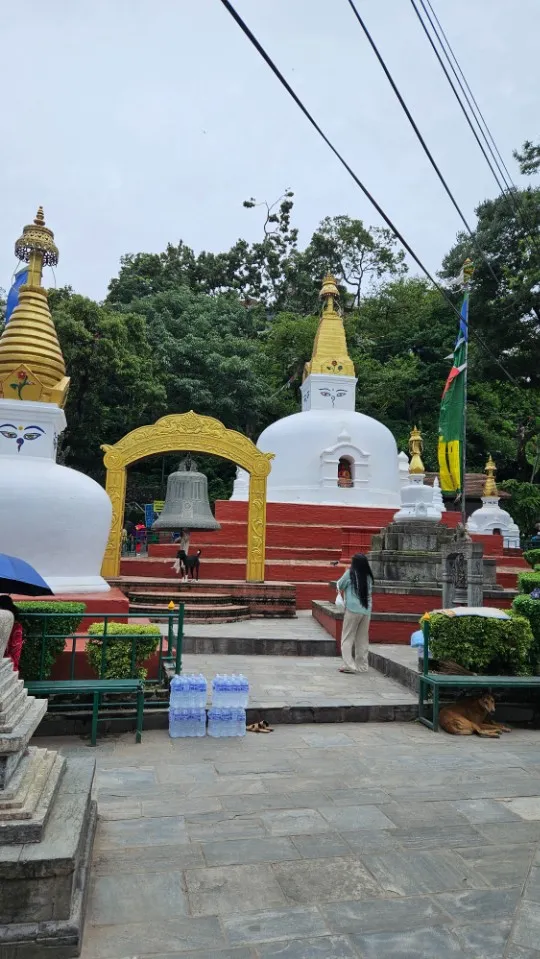
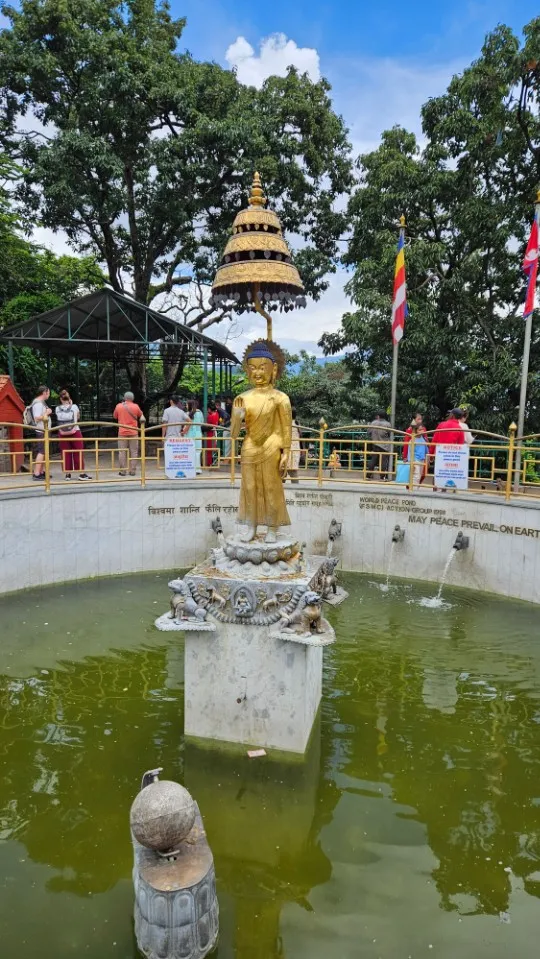
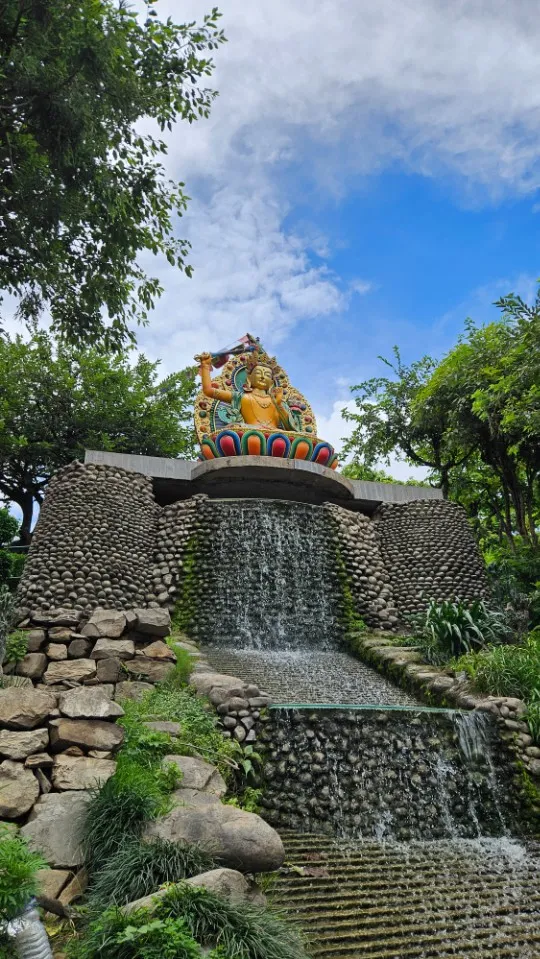
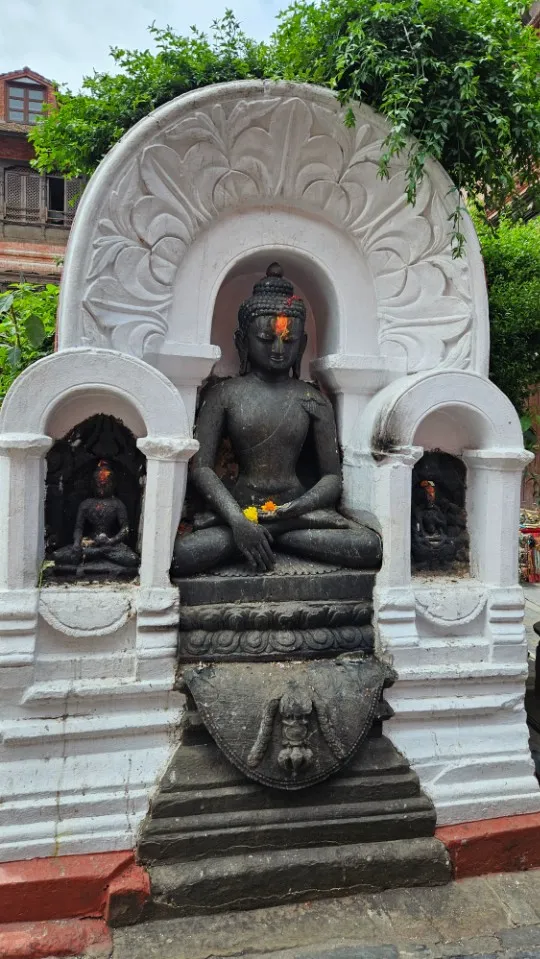

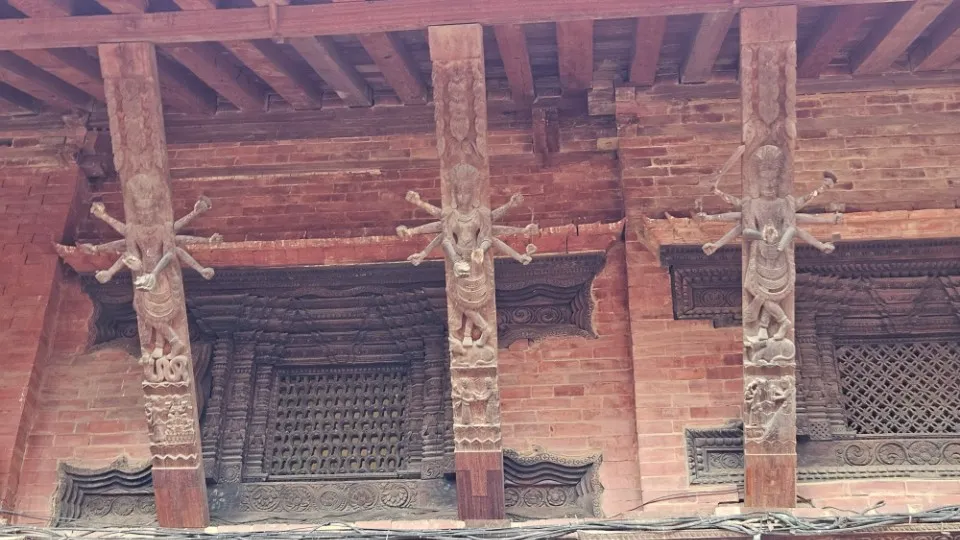
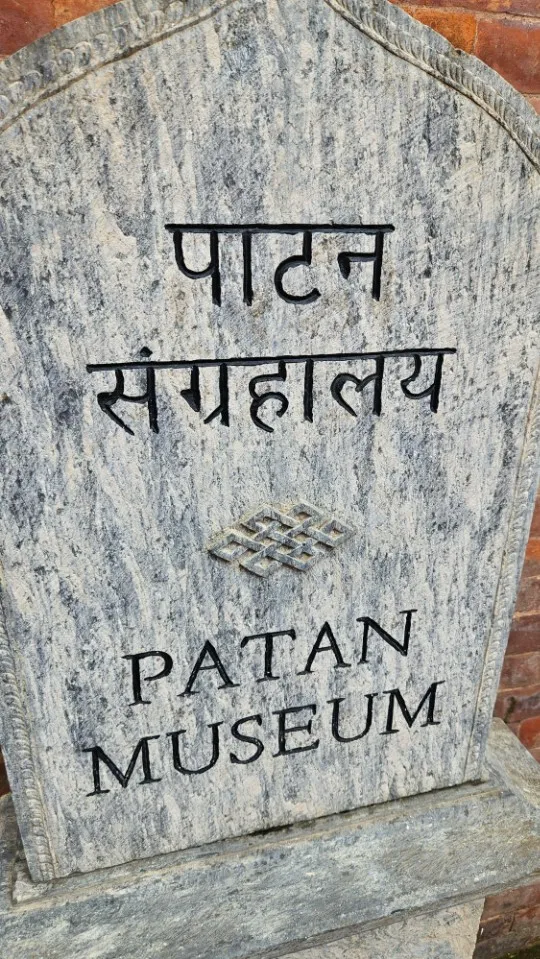
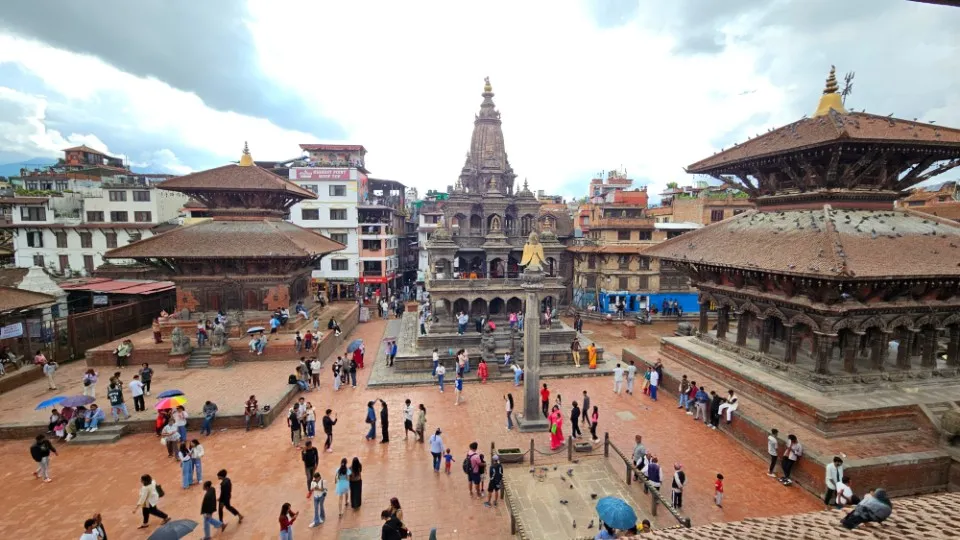
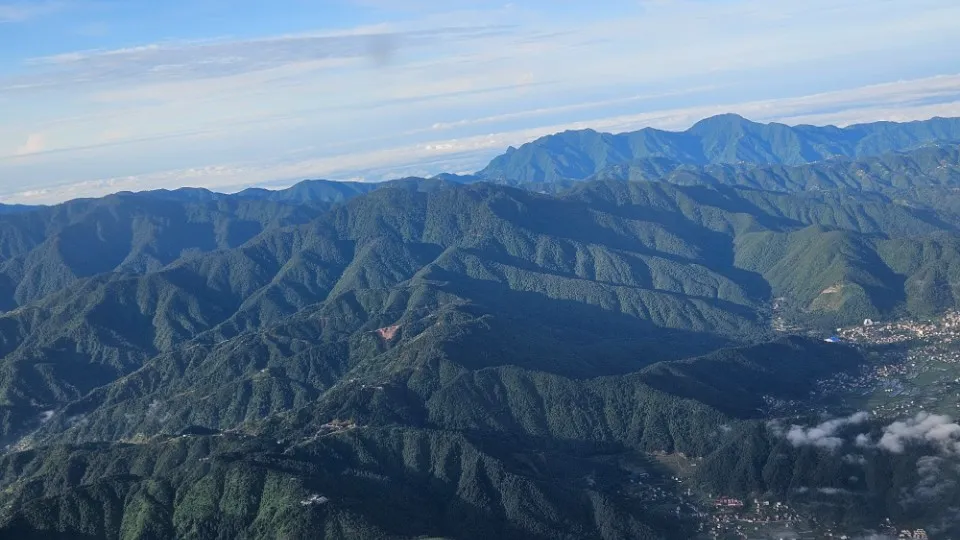
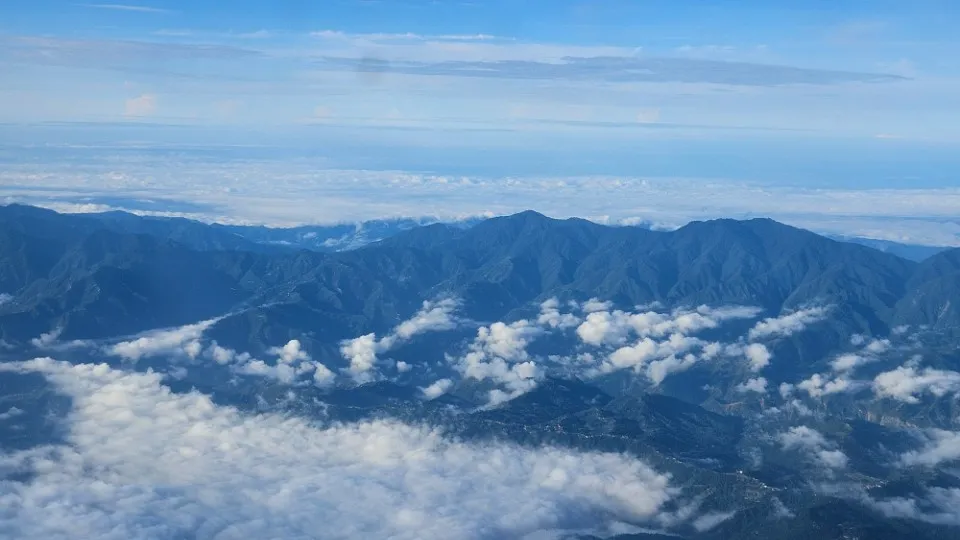
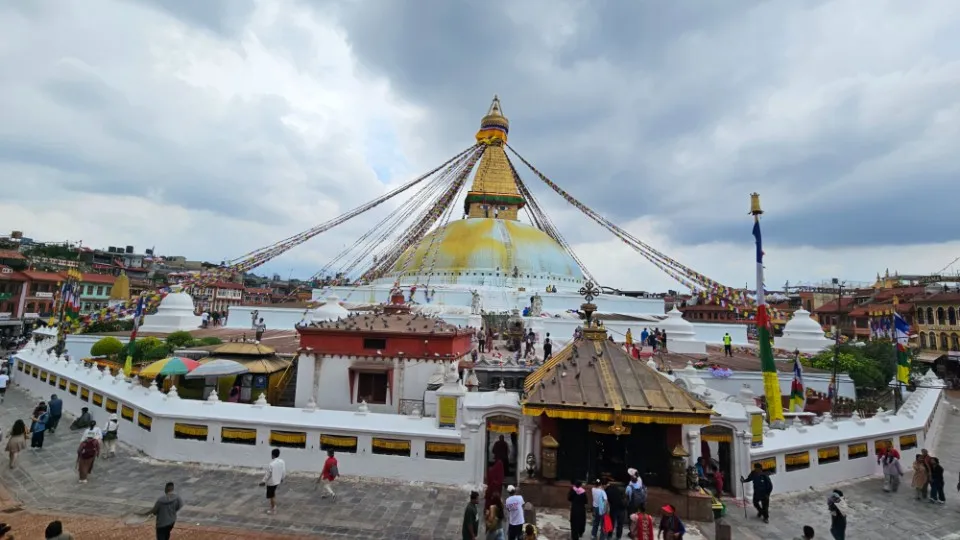
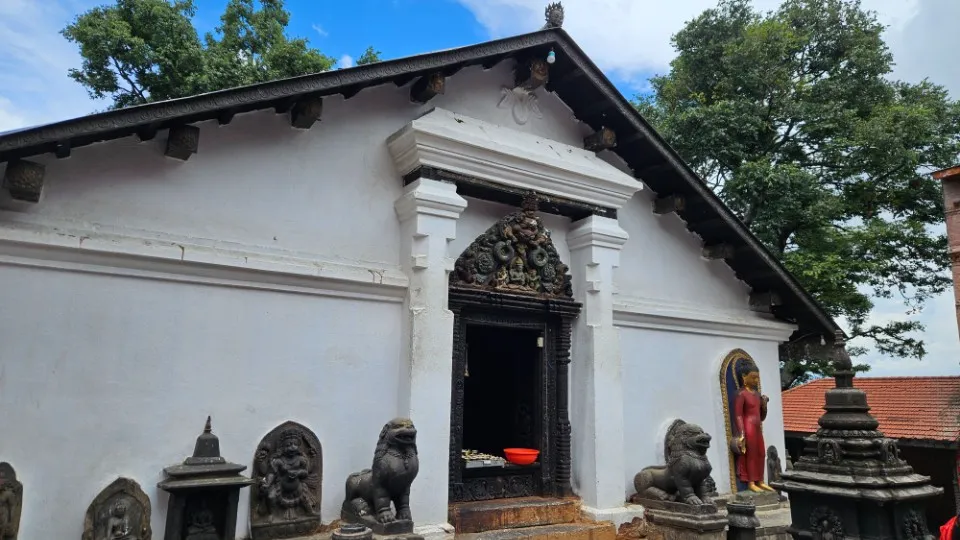
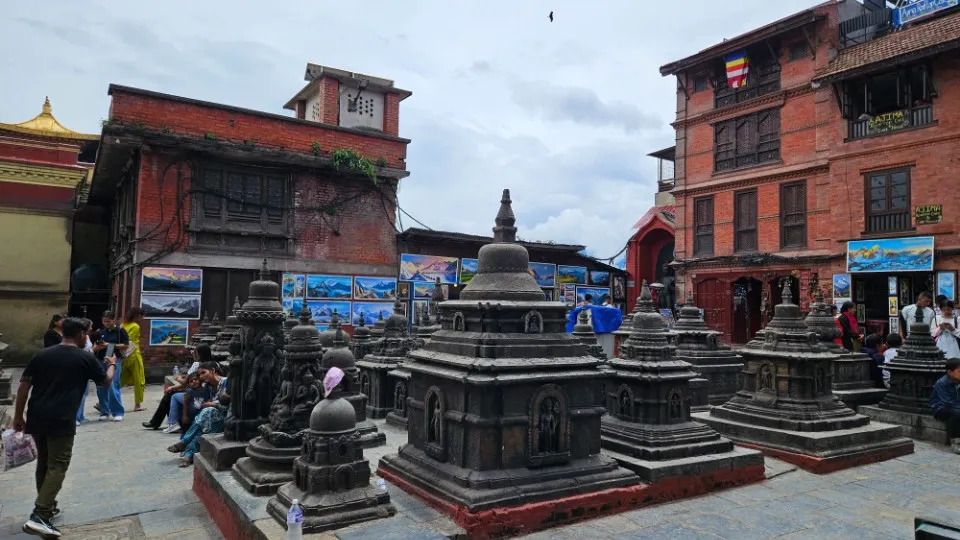
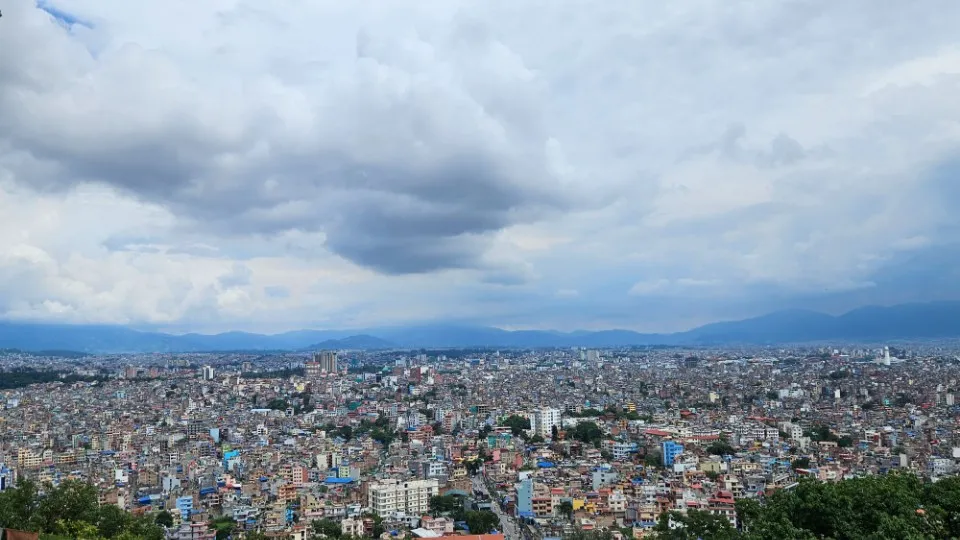

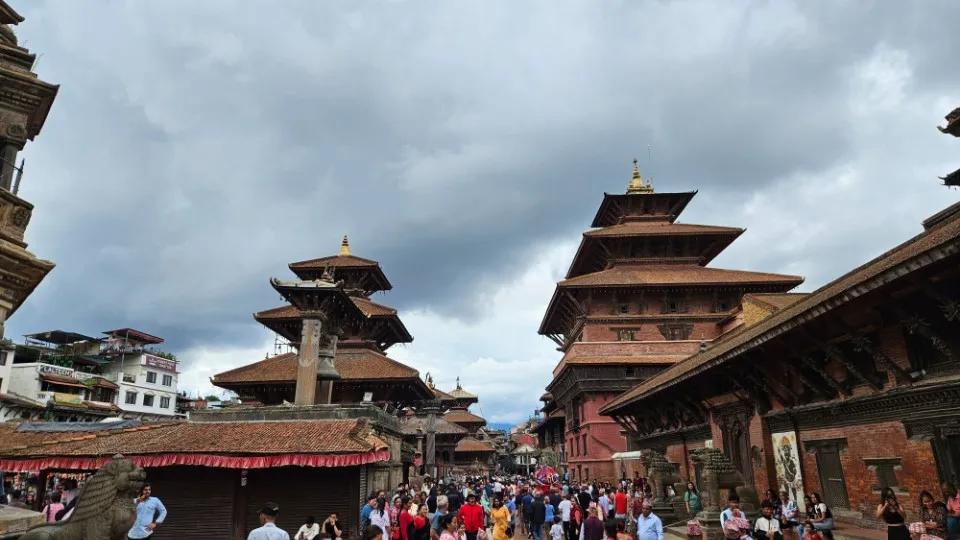
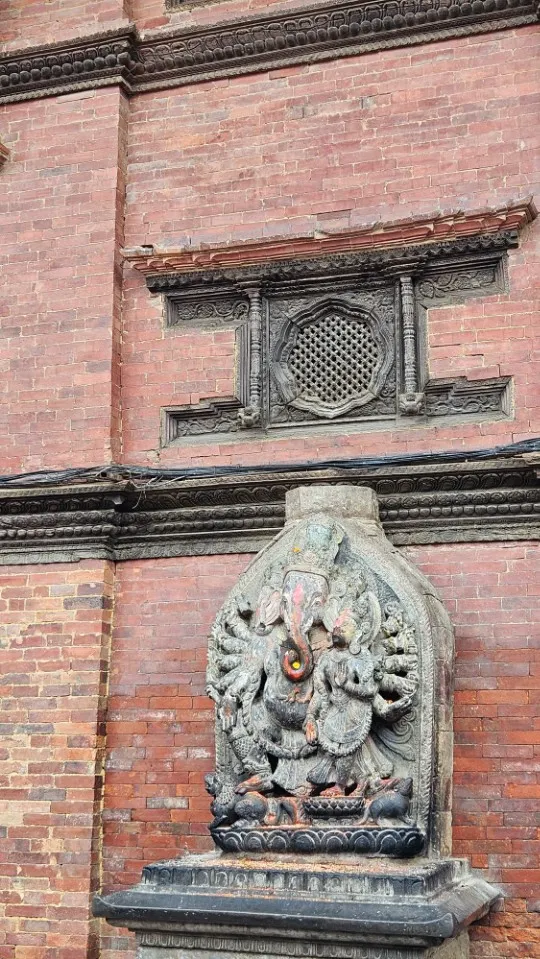
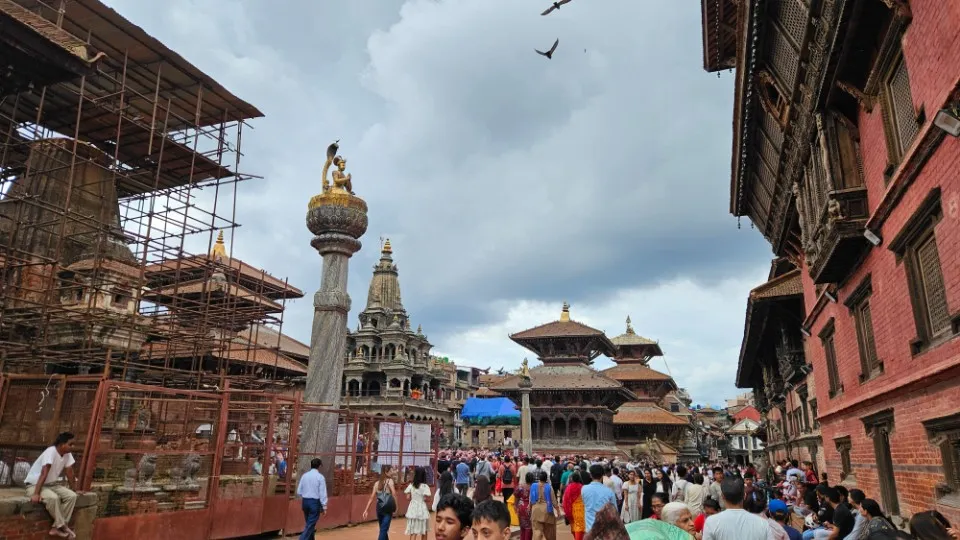
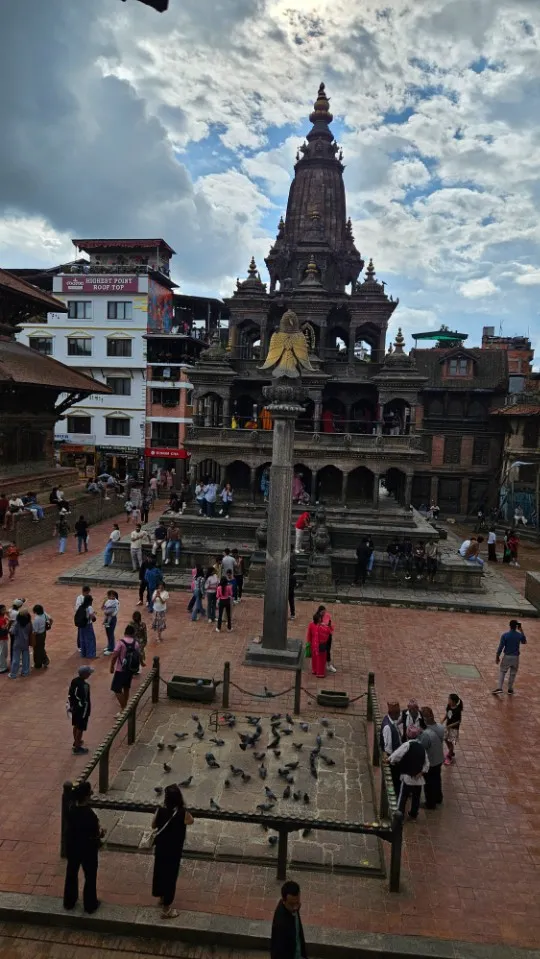
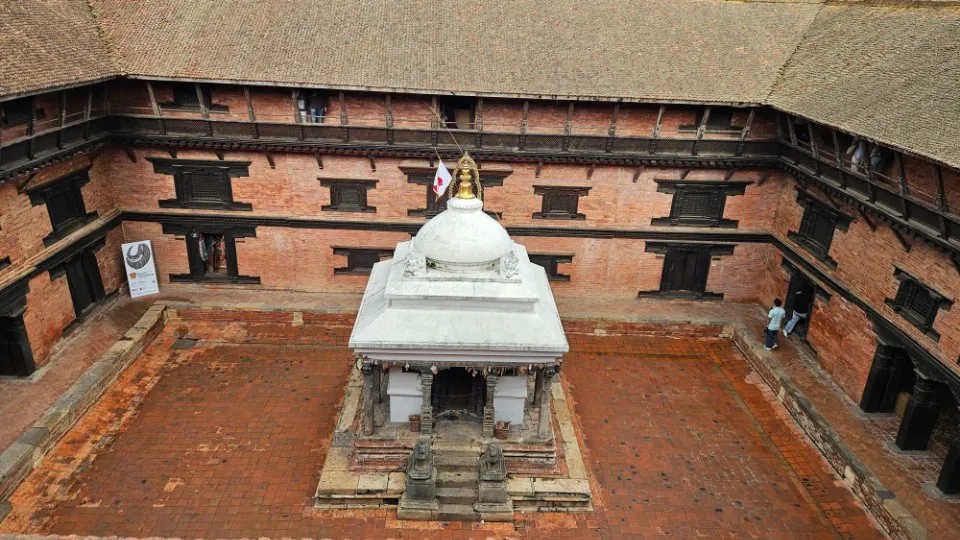
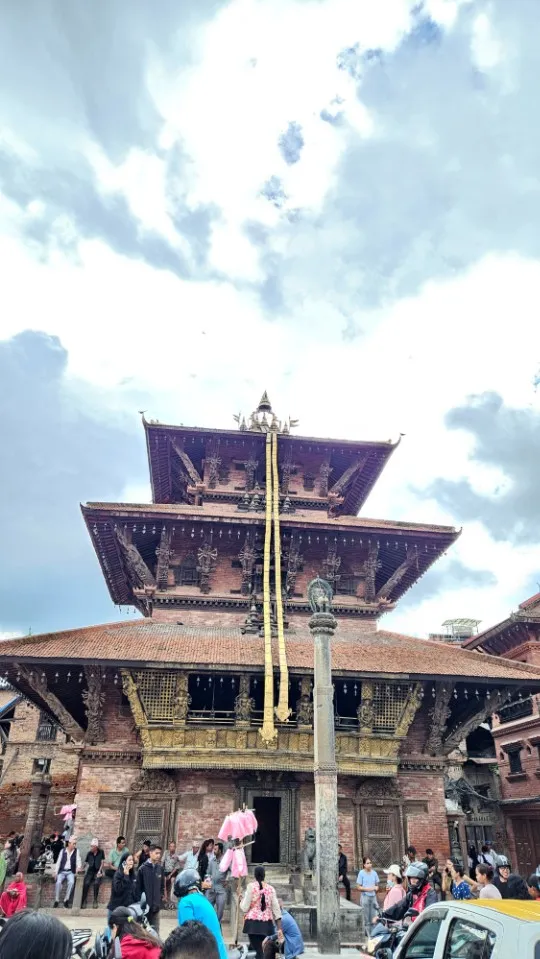
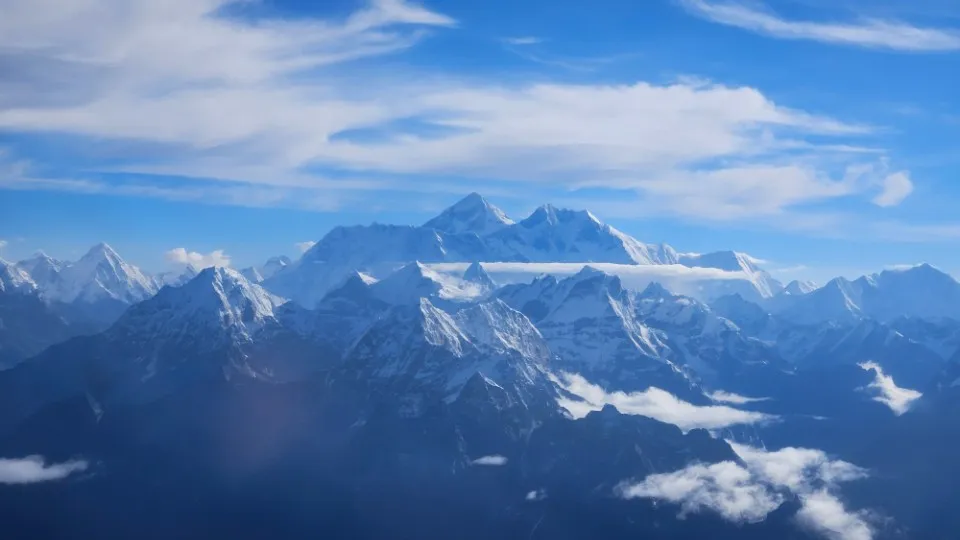
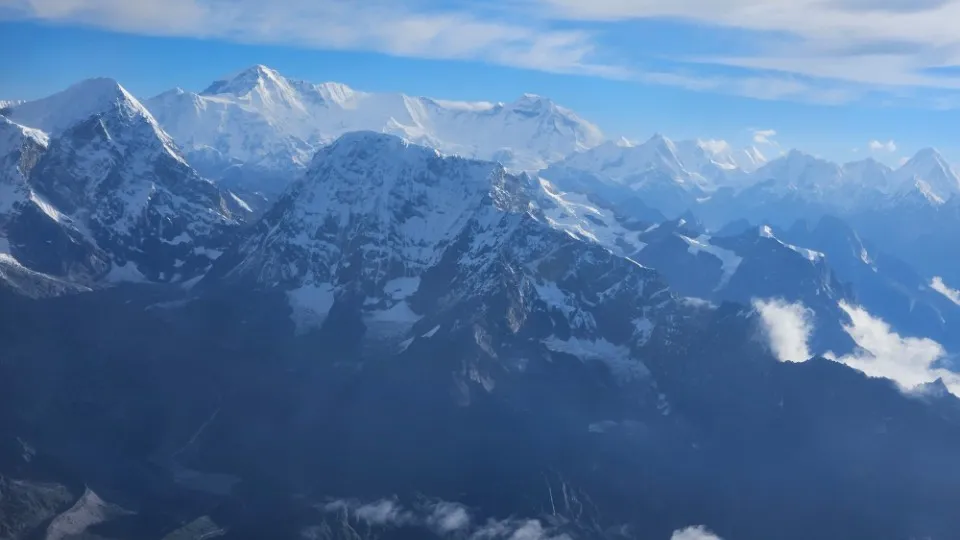
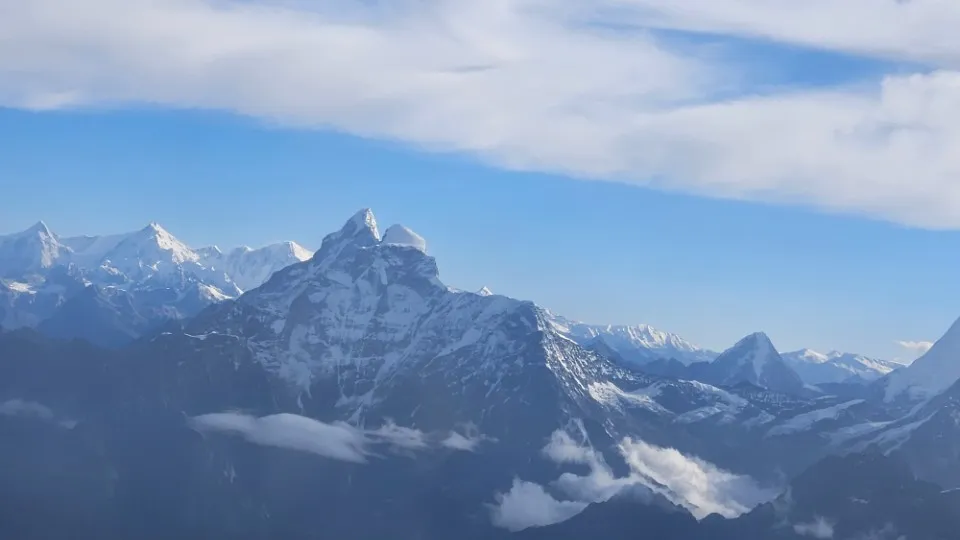
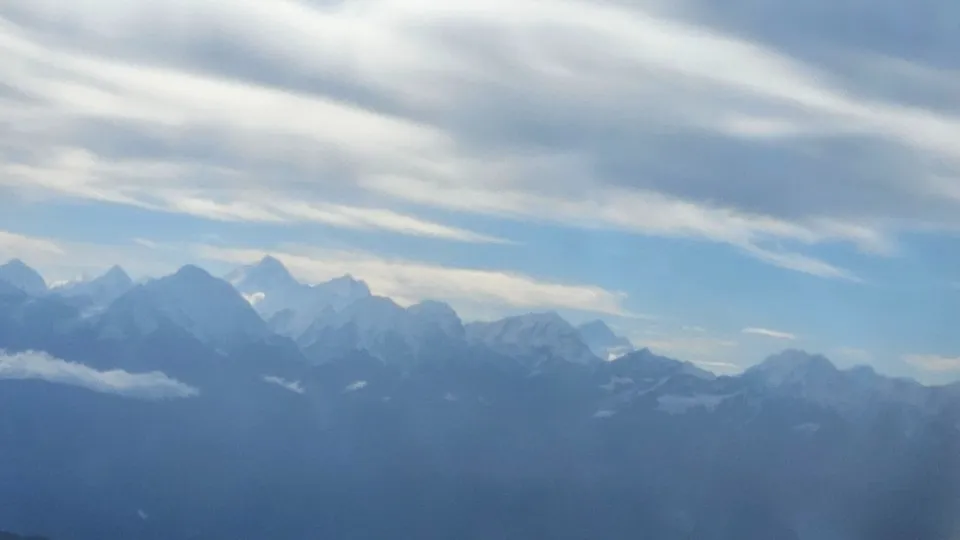
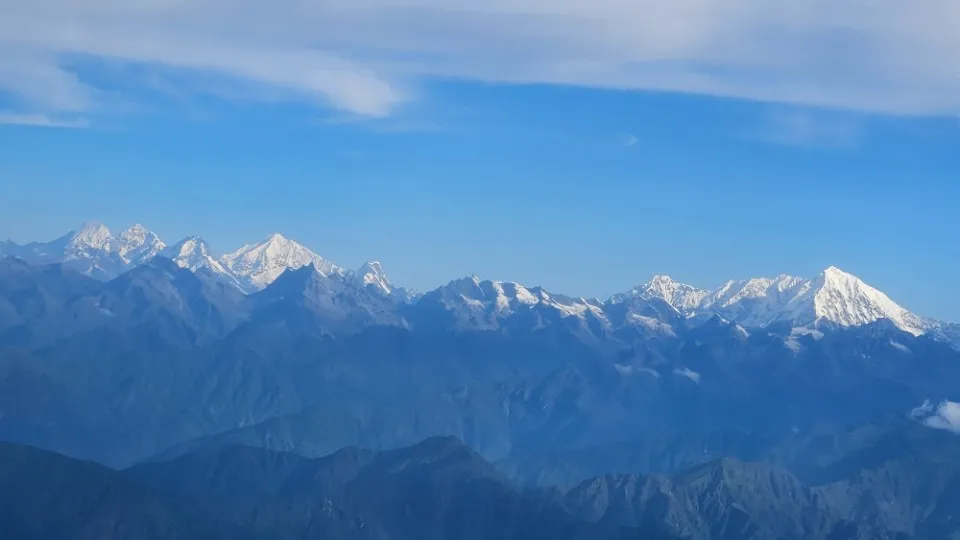
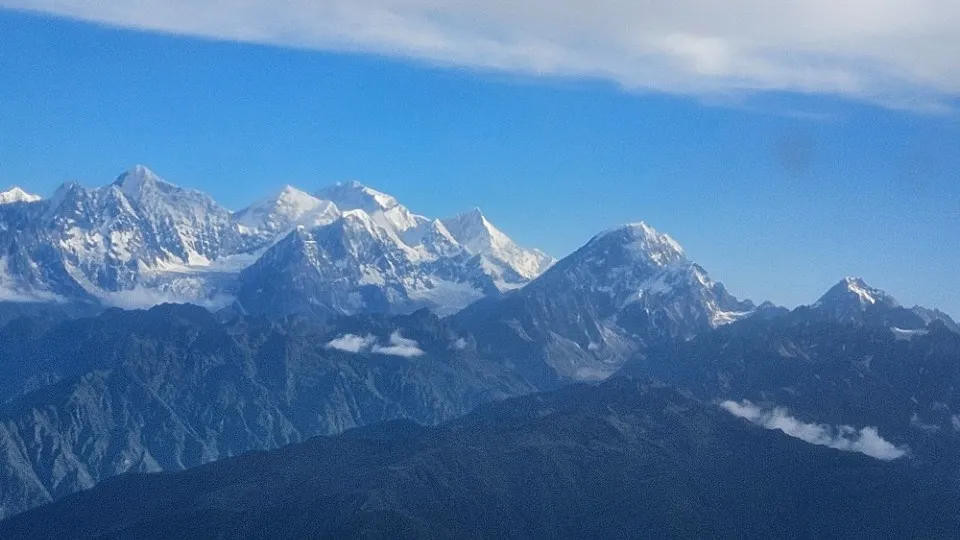
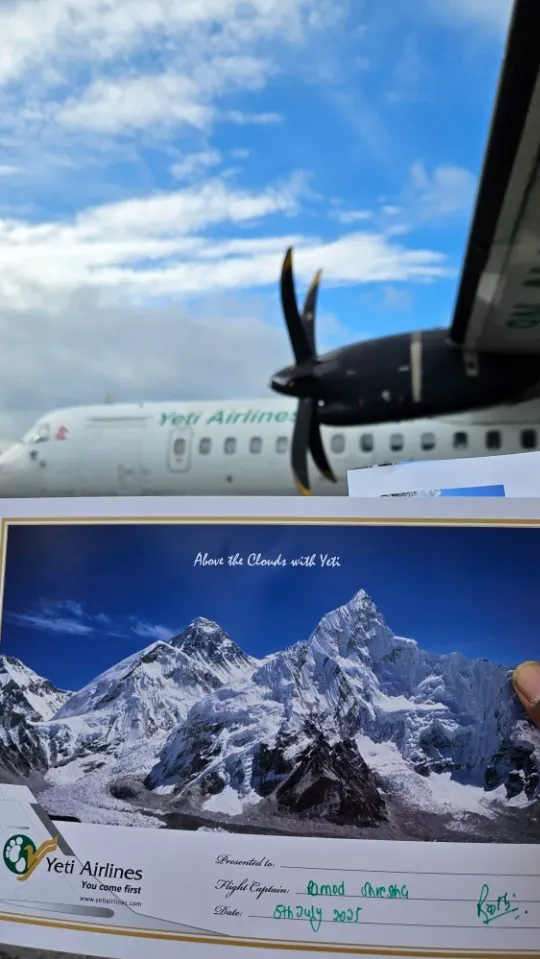
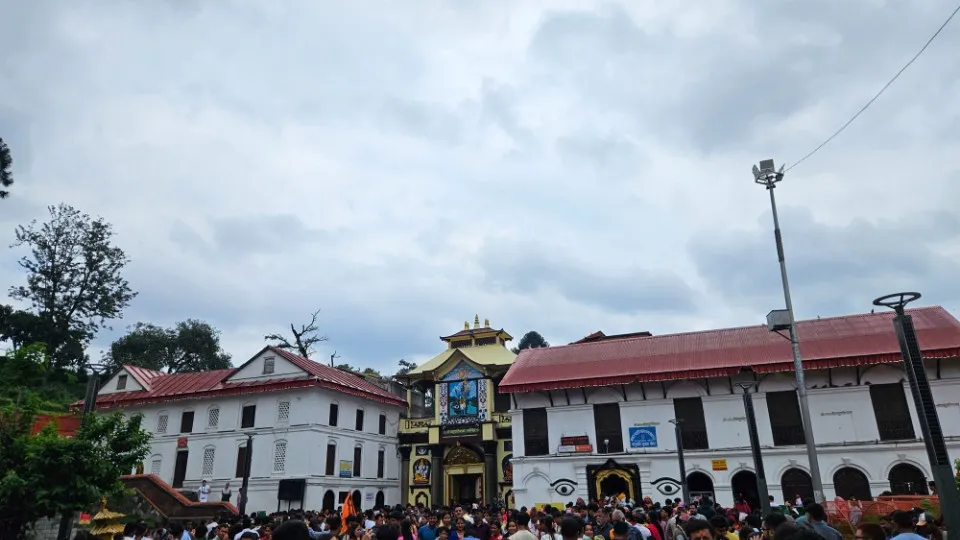


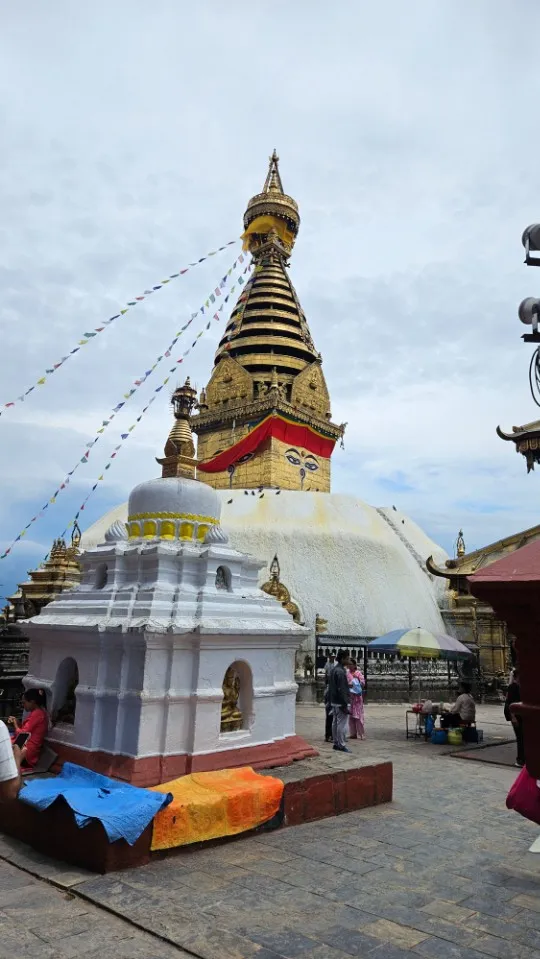
Day 3: Journey to Pokhara and Manakamana temple
Road Tripping to Pokhara with a Wish-Granting Stop!
Alright, fellow wanderlusters, day three in Nepal was all about the journey! We kicked off our morning post-breakfast, setting our sights on Pokhara, another incredible city that promises a whole new vibe. Now, you might look at a map and think 200km from Kathmandu isn't much, but trust me, Nepal's mountainous roads are not for the faint of heart (or impatient drivers!). What looked like a short hop turned into a scenic, albeit winding, 7-8 hour adventure. But oh, what an adventure it was! Our absolute highlight en route was a stop at the famed Manakamana Temple. This isn't just any temple; it's a deeply revered Hindu site dedicated to Goddess Bhagwati, believed to be a powerful wish-fulfilling deity. The very name "Manakamana" whispers its promise: "mana" meaning "heart" and "kamana" meaning "wish." How fitting, right? Perched majestically atop a 1,302-meter (4,272 ft) hill in the Gorkha district, reaching this sacred spot used to be quite the trek. But thankfully for us (and our legs!), since 1998, a modern cable car system has made it delightfully accessible. Our 10-minute ride from the base station at Kurintar was a breathtaking experience in itself! We soared above the emerald hills and valleys, soaking in panoramic views that, on a clear day, even include glimpses of the mighty Manaslu, Himalchuli, and Annapurna ranges. Talk about a divine commute! The main draw, of course, is the profound belief that Goddess Bhagwati truly grants the wishes of devotees who approach her with a pure heart. It was incredible to see pilgrims from all corners of Nepal and India flocking here, seeking blessings for everything from marital bliss and academic success to thriving businesses. The temple's 17th-century origin story is equally captivating, involving a queen with divine powers and a loyal devotee – a tale of secrets, sacrifice, and a miraculous reappearance that ensures the temple's priest today must always be a descendant of that very devotee, Lakhan Thapa. So much history wrapped in one sacred place! After our meaningful darshan (sacred viewing and worship), we hopped back into our vehicle, continuing our picturesque journey towards Pokhara. We finally rolled into the city as evening painted the sky, quickly checked into our hotel, and immediately headed out for a much-anticipated stroll. The lakeside shops, buzzing with local life, were the perfect way to unwind after a long day on the road. Soon enough, though, the comfort of our beds called out, promising a well-deserved rest for the adventures that lay ahead!
Visit
-
Manakamana Temple
-
Manakamana cable car
-
Eat
-
Hotel Pokhara Batika
Stay
-
Hotel Pokhara Batika
Photos
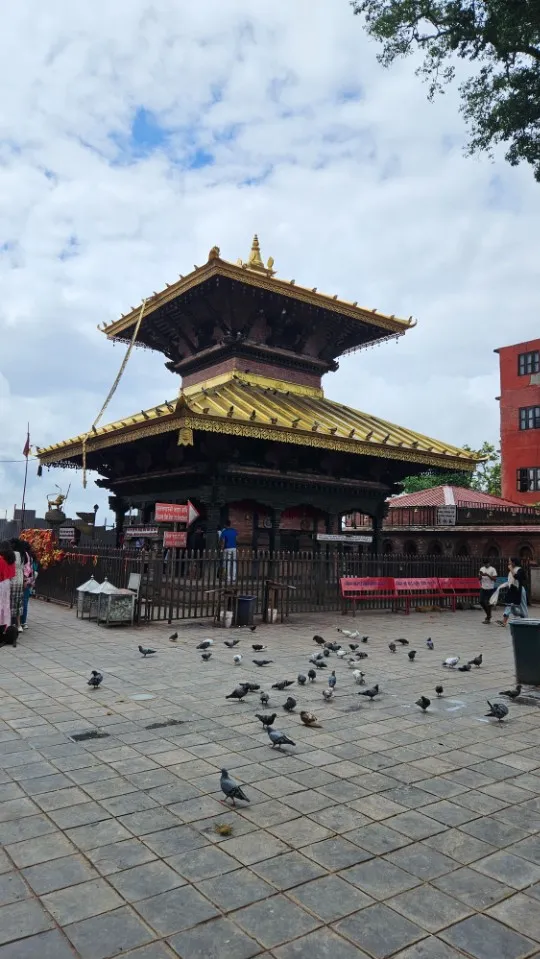
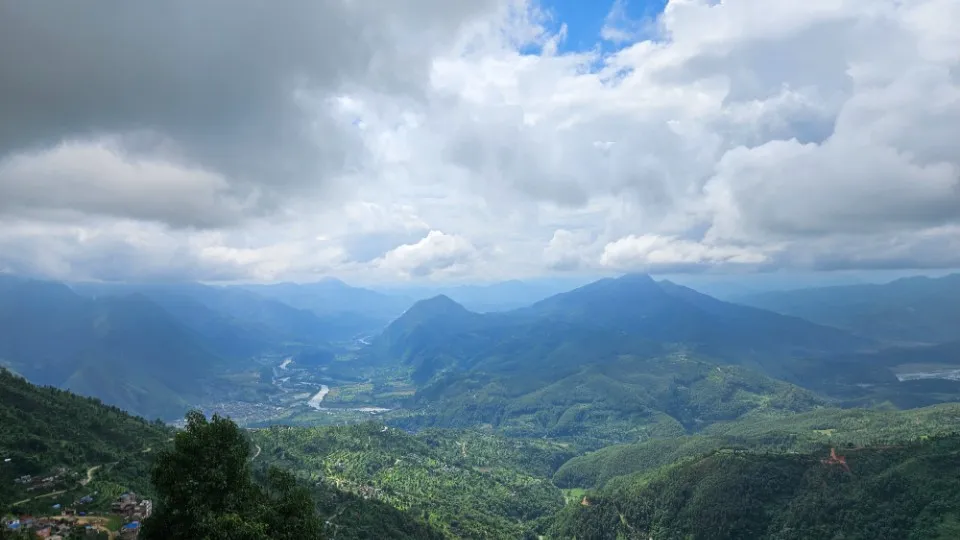

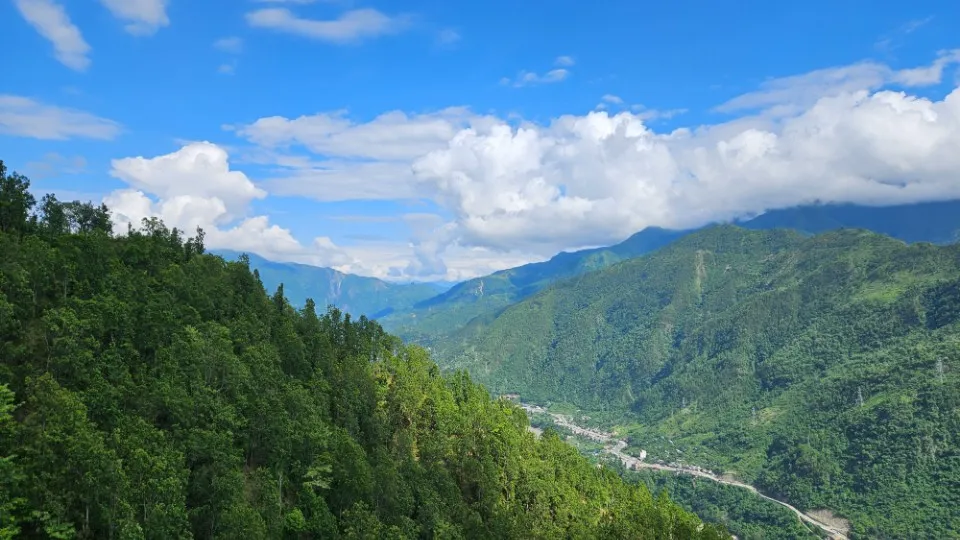
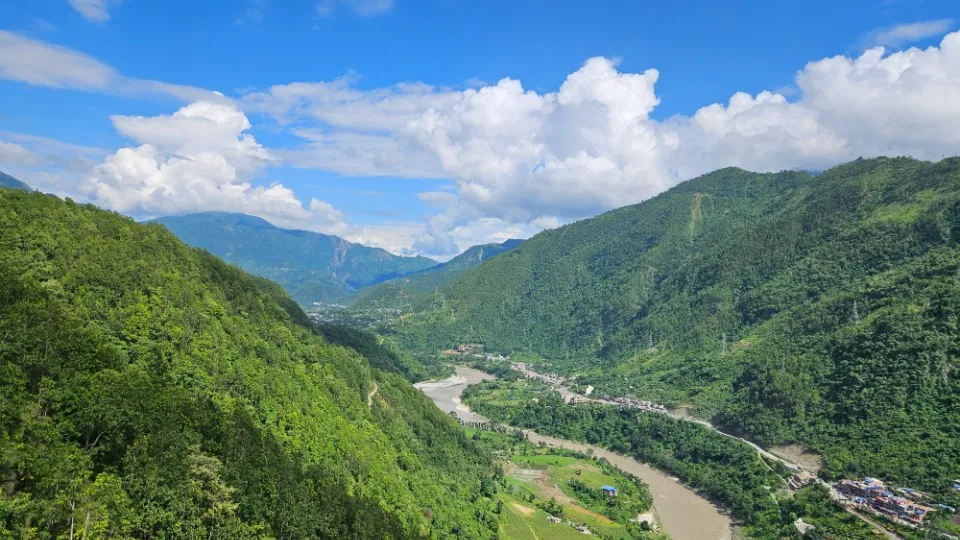
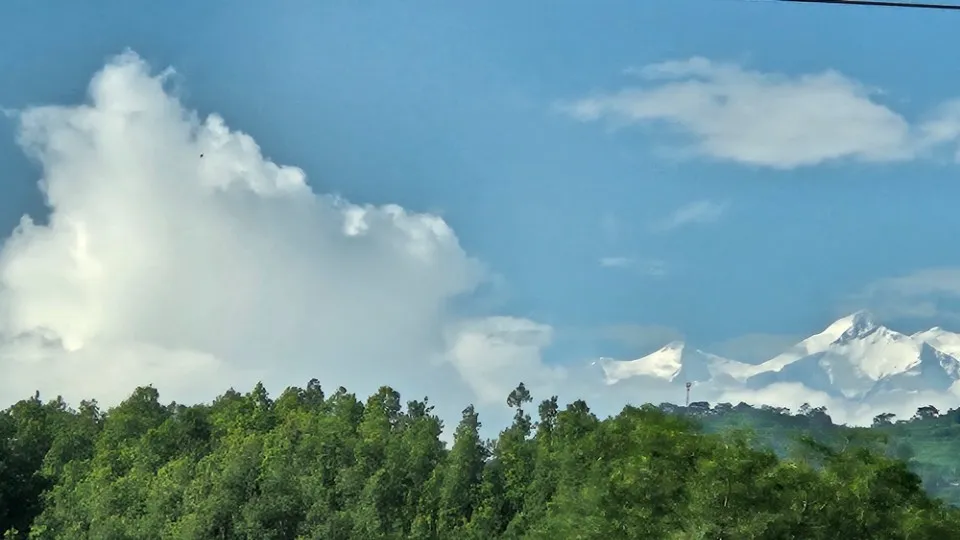
Day 4: Pokhara Sightseeing
Pokhara's Panorama & Hidden Wonders: A Day of Peaks, Legends, and Mysterious Waterways!
Today was another glorious (and yes, delightfully gruelling!) dive into the wonders of Pokhara. This city truly keeps on giving, with each stop unfolding a new layer of beauty and mystery. We kicked off our day bright and early with a visit to the Sarangkot Viewpoint, perched at the highest point in Pokhara. And what a treat it was! From here, the majestic Annapurna range stretched before us like a living postcard. Peaks like the iconic Mount Fishtail (Machhapuchhre, as it's locally known), Annapurna IV, and Annapurna II stood out, so clear and awe-inspiring that it felt truly mind-blowing. On a perfect day, you can even spot the Dhaulagiri range, but even with a bit of cloud cover, seeing these giants up close was an unforgettable experience. After soaking in those mesmerizing views and paying a quick visit to a charming small temple, we were off to our next intriguing stop. Our next destination was the serene Bidhyabasini Temple. This place comes with a fascinating legend! As the story goes, a king from this region, eager to build a grand Hindu temple for his devotees, sent a team to India to learn traditional construction techniques. They returned with a sacred stone from Vindhyachal, intending to carve their deity from it. However, as they were carrying this weighty stone up a hill, they paused for a rest at this very spot. But when they tried to lift the stone again, it wouldn't budge – it seemed utterly stuck! Interpreting this as a divine sign that the goddess wished to reside right here, they carved her image on the spot and began their worship. Today, it's a wonderfully quiet and peaceful complex, with multiple smaller temples adding to its spiritual charm. Next, we explored the fascinating Seti River Gorge. Pokhara's geography is truly unique, and one of its quirkiest features is the Seti River, which actually runs underneath much of the city! This gorge is one of the only places where you can actually catch a glimpse of its rapid, powerful flow, deep down below. The sheer force of the water as it churns through the narrow gorge is incredible, though now much of its power is harnessed for electricity and irrigation – a testament to human ingenuity. It was quite a hot day, and pulling ourselves away from the depths of the gorge, we realized our stomachs were rumbling! So, we promptly made a beeline for lunch, refuelling for the second half of our Pokhara exploration. Refreshed and ready, our next stop was the infamous Davis Falls (or Devi's Falls, as it's also known). The story behind its name is both tragic and memorable: in 1961, a Swiss couple came here for a swim, but sadly, due to the sheer force of the water, the wife drowned and was swept away. The falls were then named in her memory. The power of the water here, regulated from a dam across Phewa Lake, is absolutely astounding; you can hear its thunderous roar long before you even see it! What's truly captivating is that the water doesn't simply disappear; it plunges underground from here, continuing its mysterious journey until it reappears at the Gupteshwar Mahadev Temple, our very next stop! Right opposite Davis Falls, we descended into the mystical Gupteshwar Mahadev Cave Temple, dedicated to Lord Shiva. Legend has it that this cave was discovered during excavations for the Davis Falls' water, revealing a self-formed lingam (a symbolic representation of Shiva). Beyond the main deity, you can venture deeper into the cave to see where the waterfall plunges into the earth. The biggest mystery? The water seemingly vanishes after this point, its underground path remaining unknown. It truly adds an element of intrigue to an already spiritual experience! And with that final, mysterious exploration, our day came to a wonderful, albeit wonderfully tiring, close. It was another action-packed, fascinating day discovering Pokhara's hidden gems and iconic landmarks. We soon found ourselves back at the hotel, ready for a well-deserved rest, dreaming of all the wonders we'd uncovered!
Visit
-
Sarangkot View Point
-
Bindabasini Temple
-
Seti River Gorge
-
Davis Fall Pokhara.
-
Gupteshwor Mahadev Cave
-
Eat
-
Byanjan
-
Hotel Pokhara Batika
Stay
-
Hotel Pokhara Batika
Photos
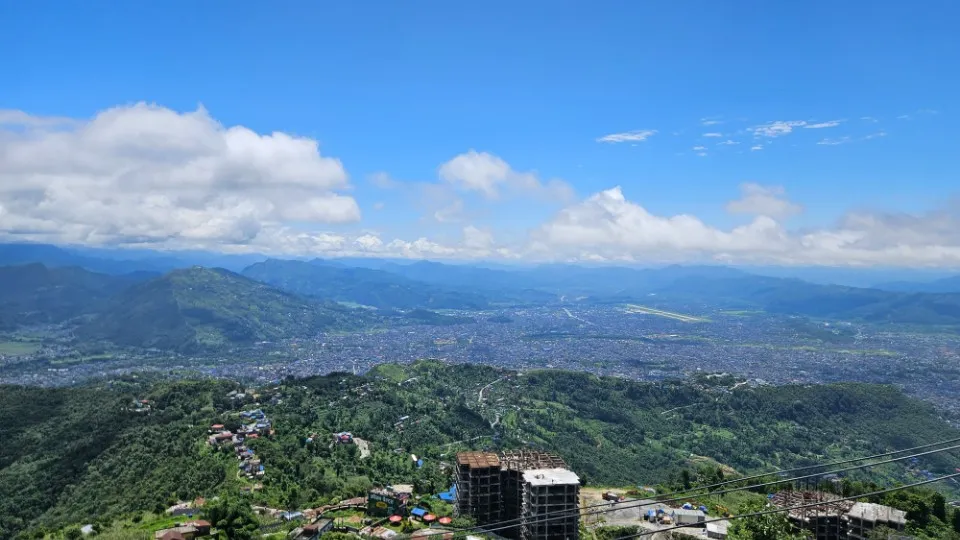
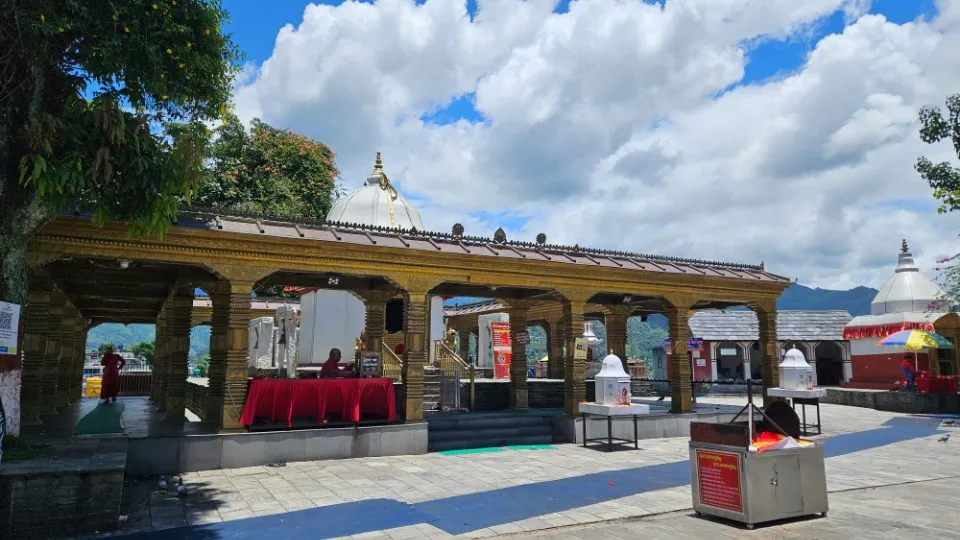
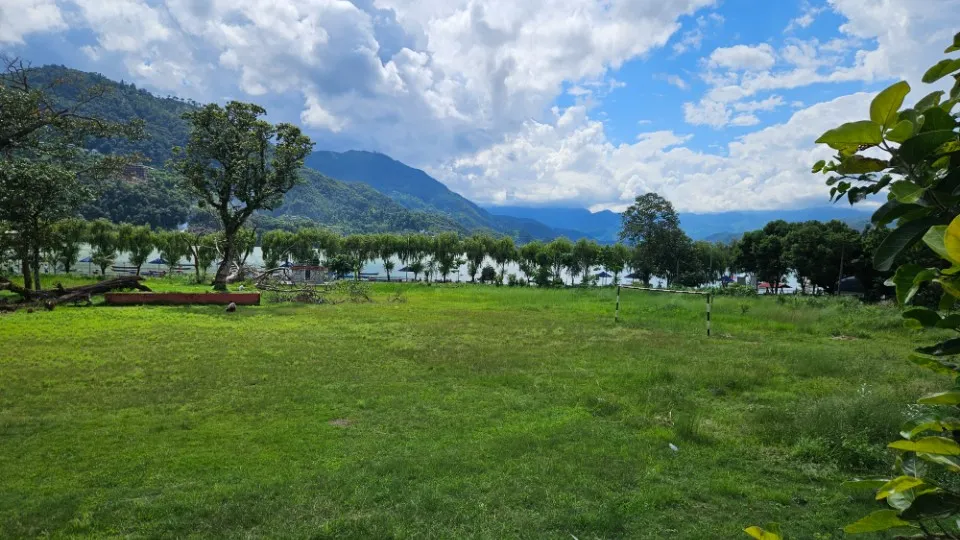
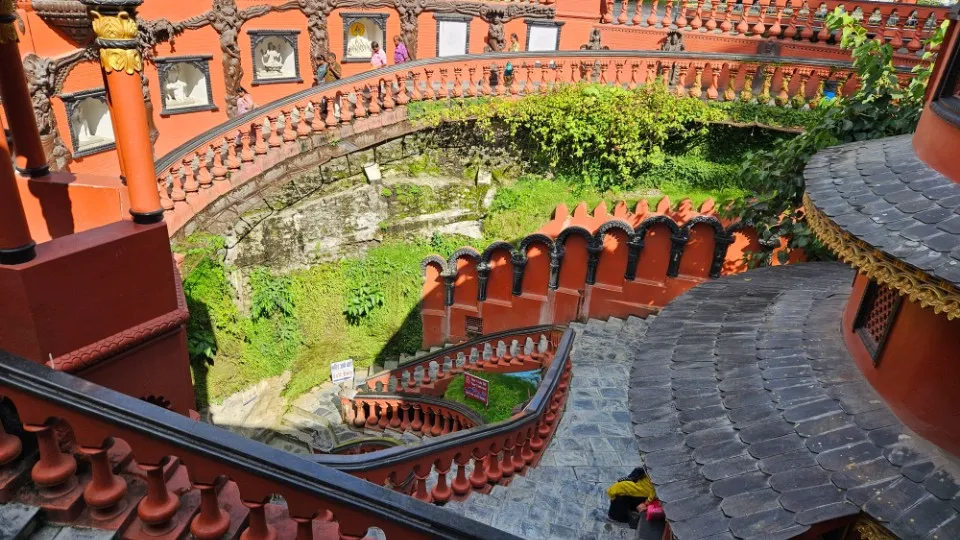

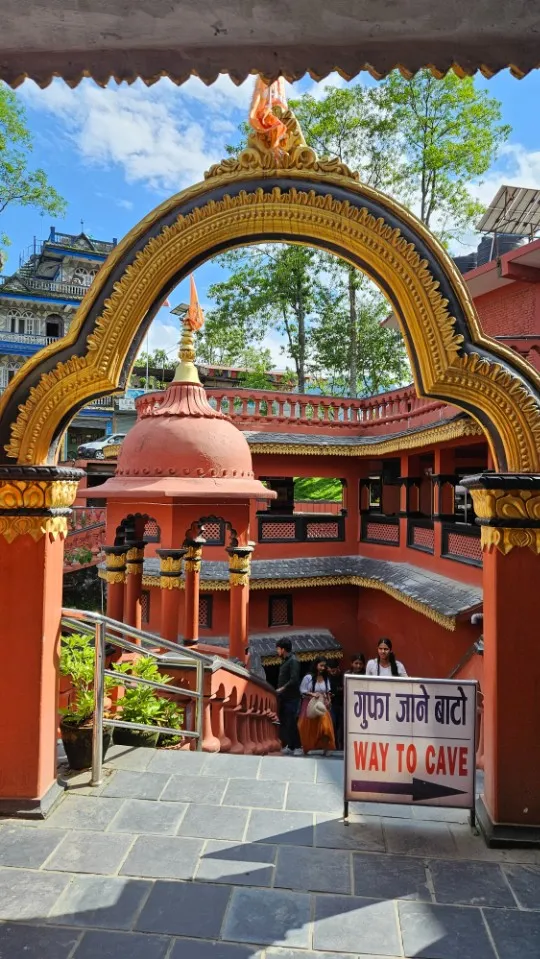
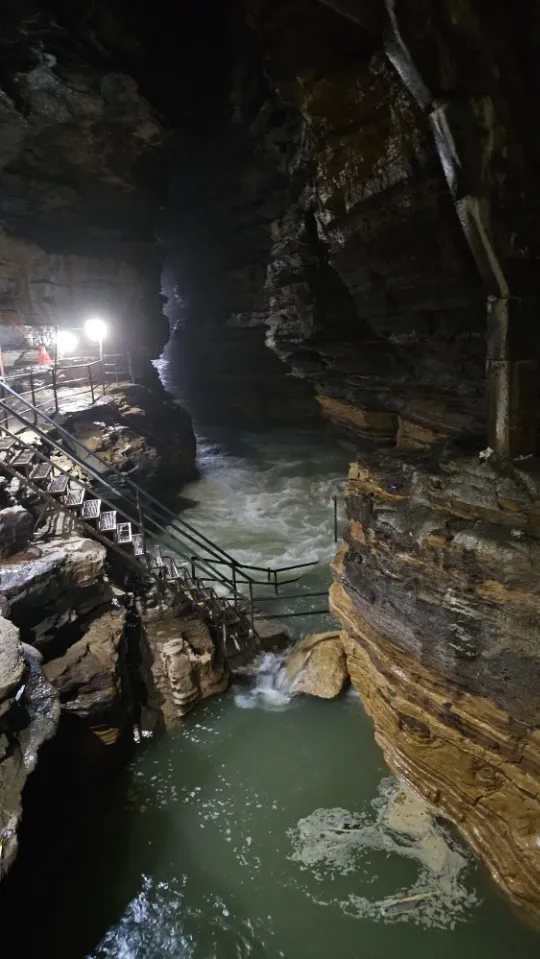
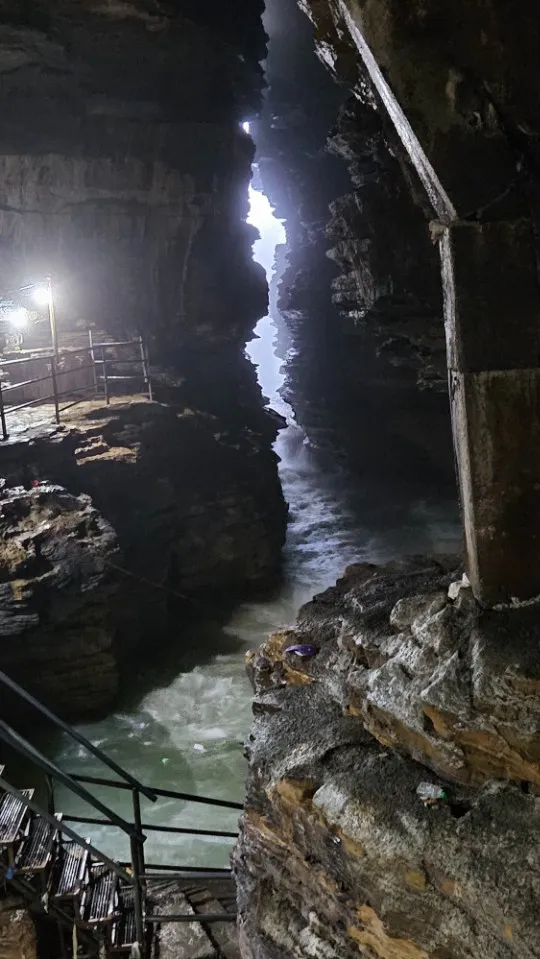
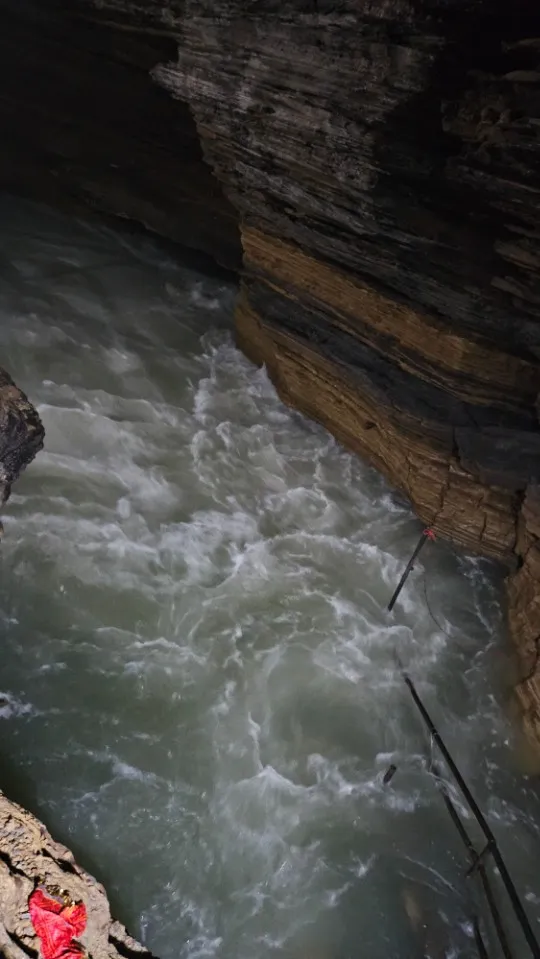
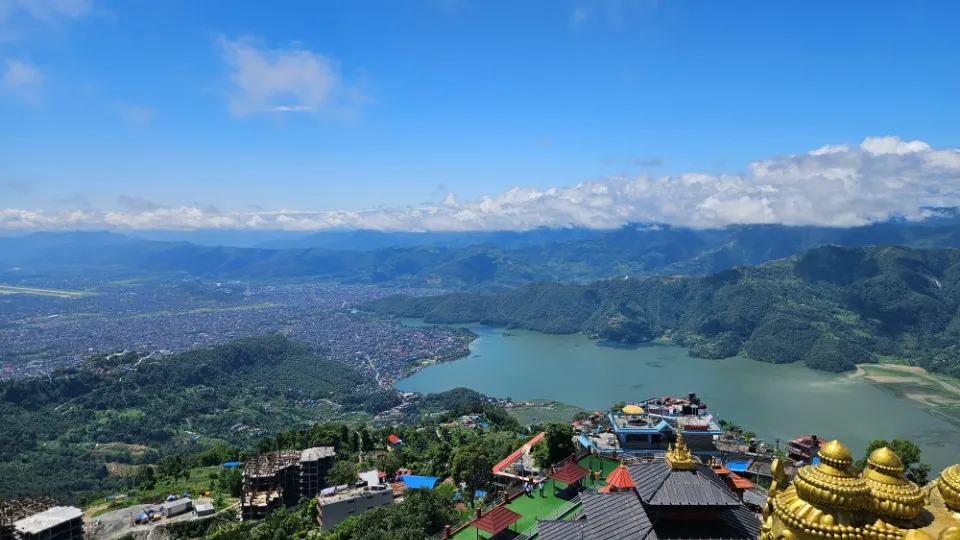
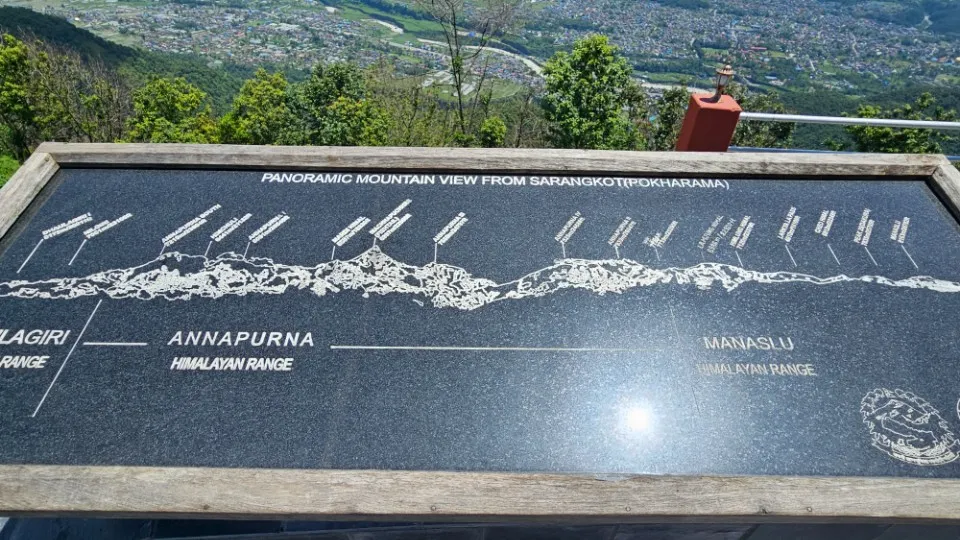


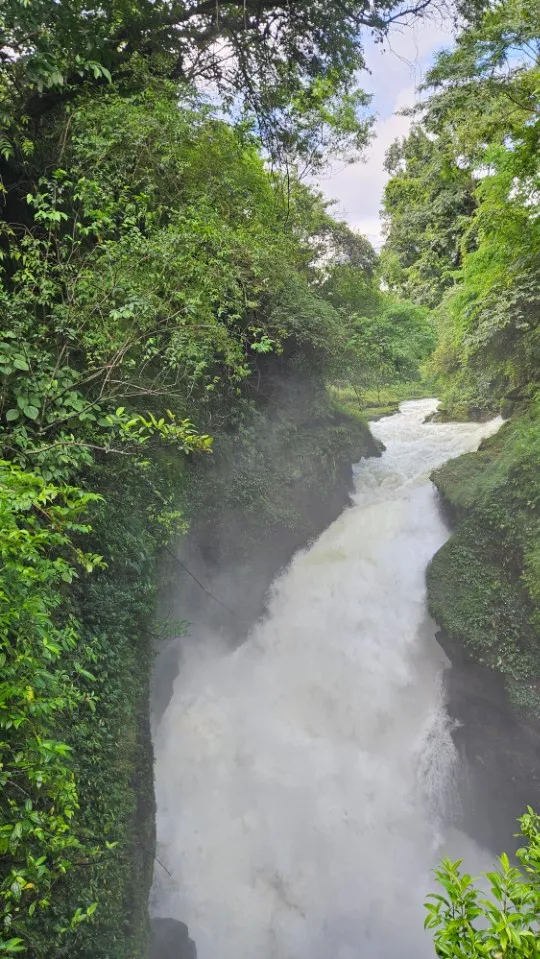
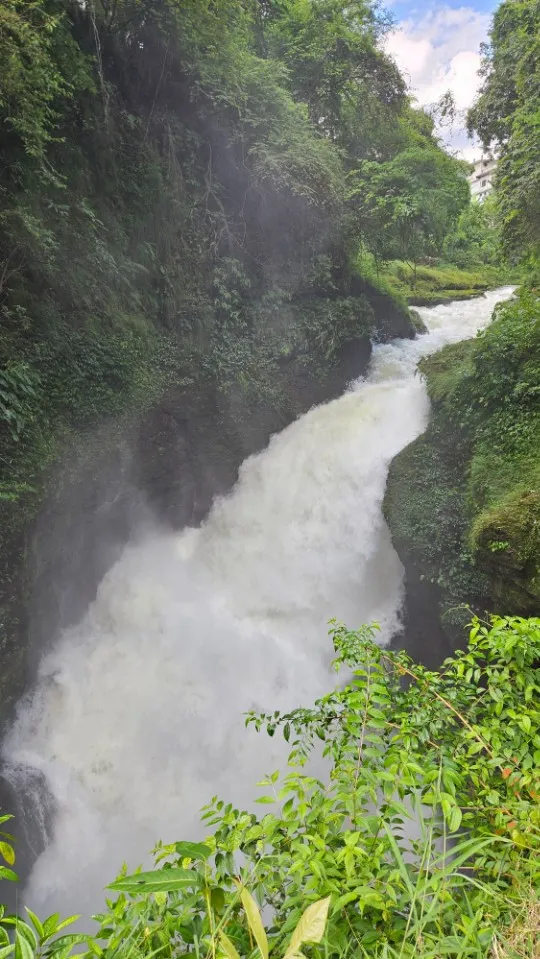
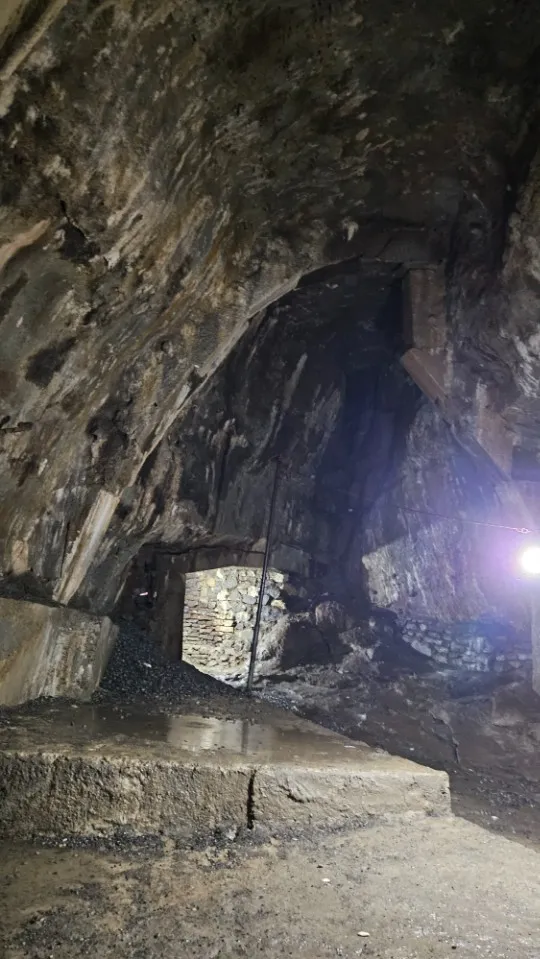
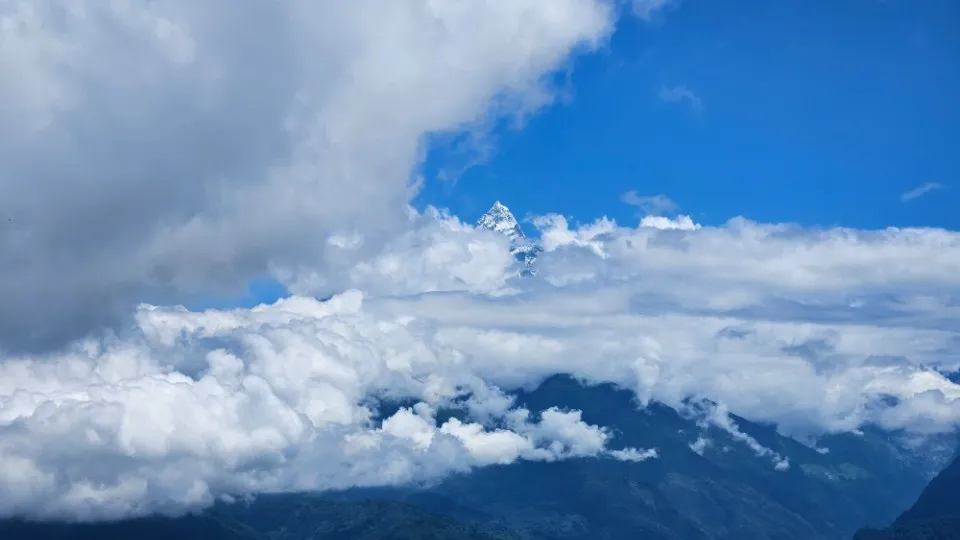
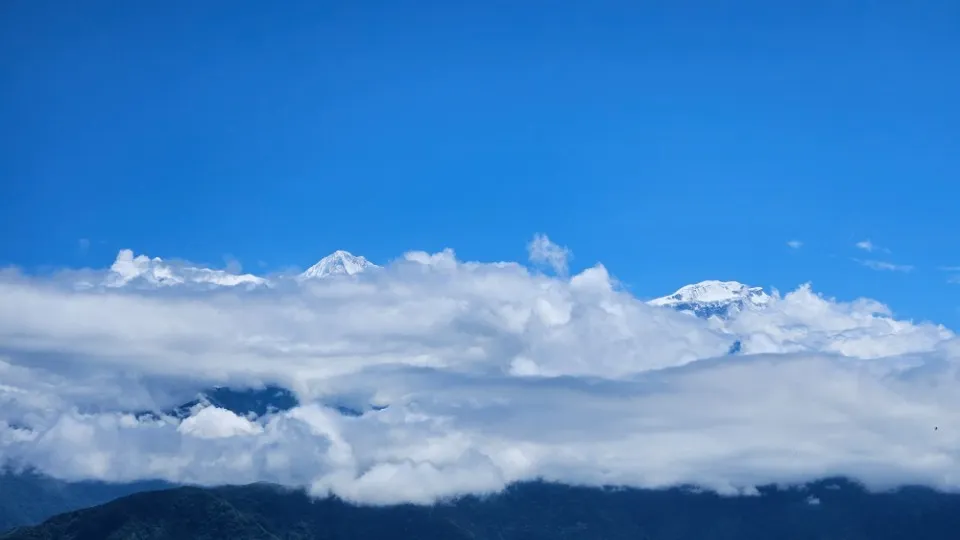
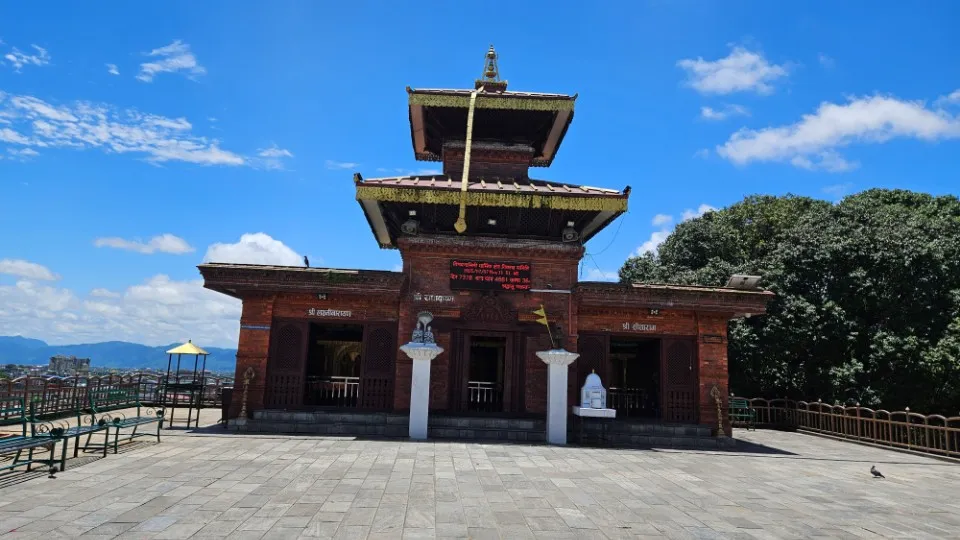
Day 5: Journey back to Kathmandu
Farewell, Pokhara! A Scenic Return to Kathmandu & Souvenir Hunts!
Well, all good things must eventually lead back to home base – or in our case, back to Kathmandu! Today was our bittersweet journey from Pokhara, another full day on Nepal's winding roads. Clocking in around six hours of travel, even with a delightful lunch pitstop, the stunning scenery kept us captivated. One of the unexpected highlights of our drive was a spontaneous stop at a hanging bridge spanning the powerful Trishuli River. And when I say powerful, I mean powerful! With the previous night's heavy rainfall, the river was in full, magnificent force, a truly impressive sight to behold. Standing on that swaying bridge, feeling the roar of the water beneath us, was an exhilarating moment – a raw reminder of Nepal's untamed natural beauty. We finally rolled into Kathmandu late afternoon, and after a quick and efficient check-in at our hotel, our feet were itching for one last taste of Nepali charm. We decided on a relaxed evening stroll back to the familiar Pashupatinath area, not just for its spiritual aura, but with a definite mission in mind: souvenir hunting! And let me tell you, if you're ever in Nepal and looking for a meaningful keepsake, Rudraksha beads are an absolute must-buy. These beautiful dried seeds from the Elaeocarpus ganitrus tree hold deep spiritual significance for both Buddhists and Hindus, often used in prayers and meditation. Given that they're widely grown right here in Nepal, you'll find authentic ones at great prices. Beyond the powerful Rudraksha, the Pashupatinath area (and indeed, many markets in Kathmandu) is a treasure trove of other lovely finds: think delicate gemstones that sparkle with local craftsmanship, beautifully crafted cloth bags perfect for everyday use, and an array of colourful beads to create your own unique jewelry. We had a wonderful time sifting through the stalls, finding little pieces of Nepal to bring home with us. With our bags a little heavier and our hearts full of incredible memories, we soon headed back to the hotel. An early flight beckoned, signalling the grand finale of our unforgettable Nepali adventure!
Visit
-
Pashupatinath Mandir
-
-
Phewa Lake
Eat
-
Triple Crown Restaurant and coffee bar Dhulikhel
-
Paawan Sweets Battisputali
-
Hotel Pokhara Batika
-
Hotel Mirage Regency
Stay
-
Hotel Mirage Regency - Kathmandu
Photos
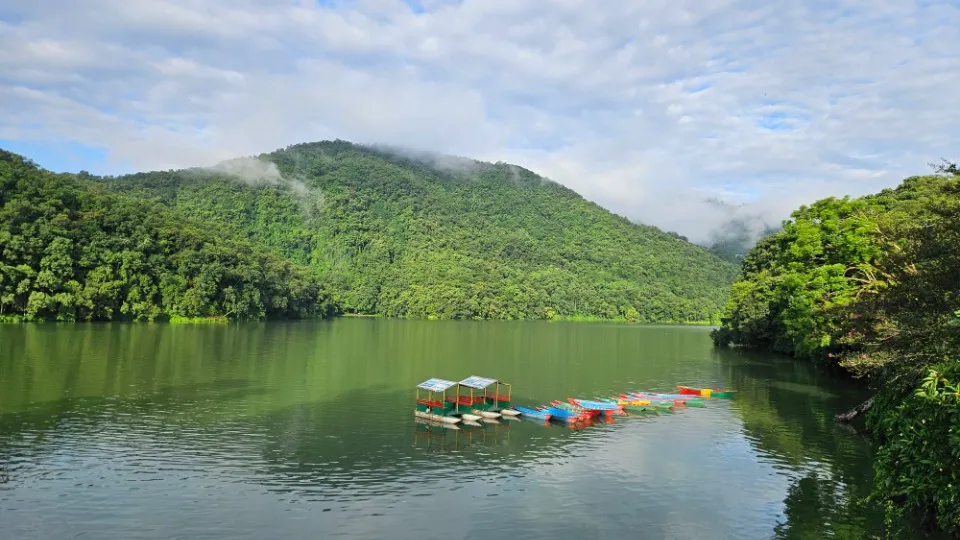
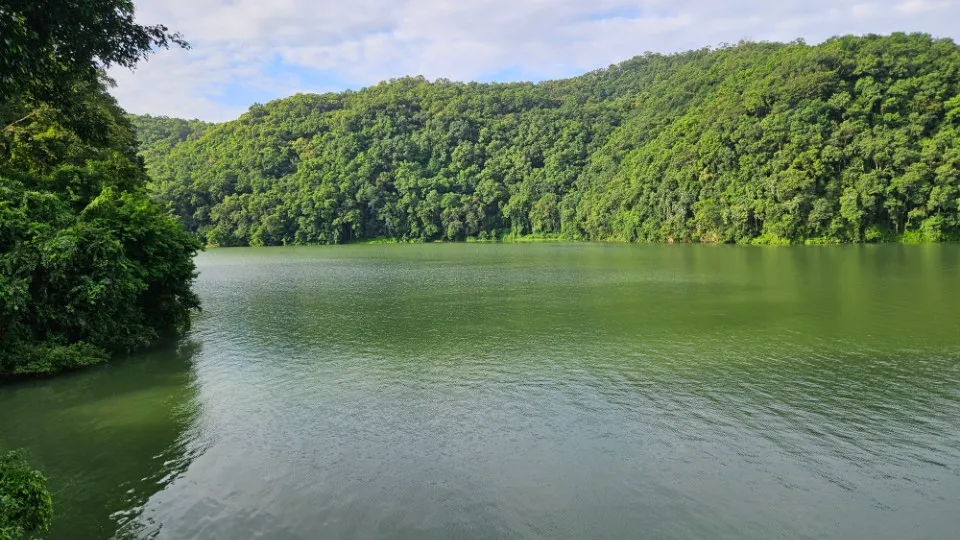
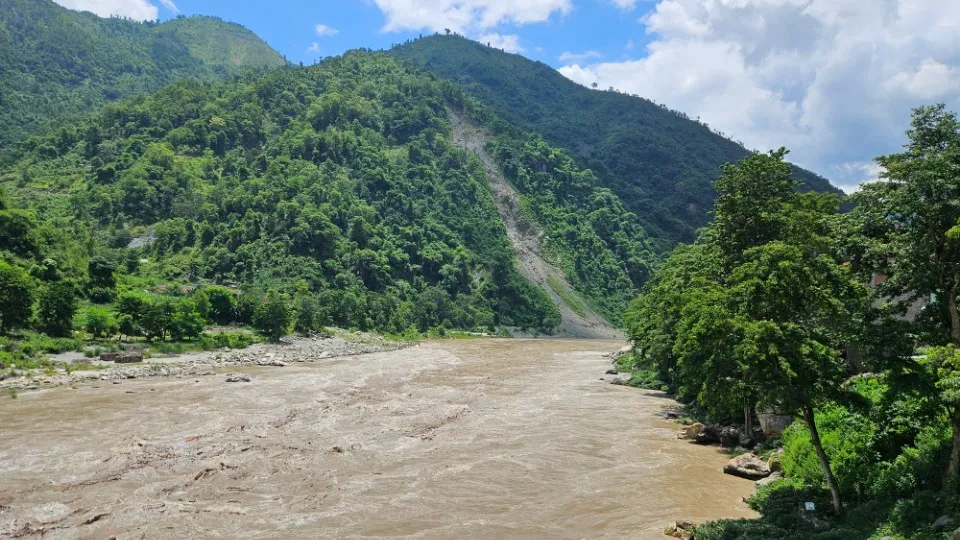
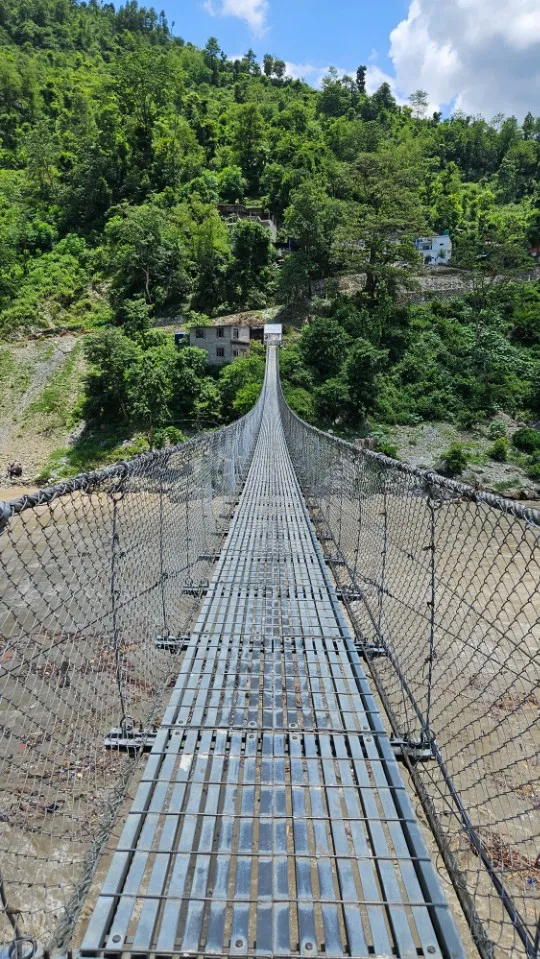
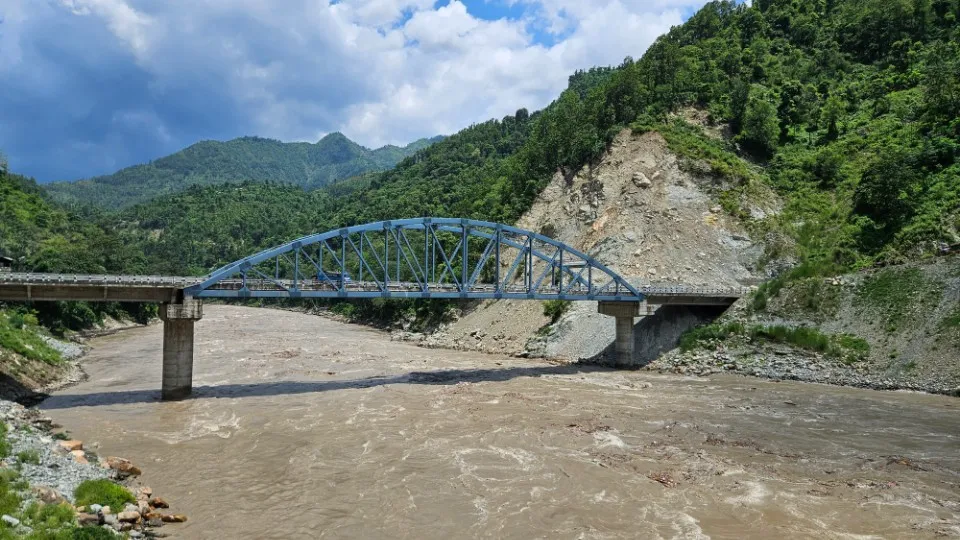
Day 6: Departure
One Last Glimpse & An Unforgettable Farewell to Nepal
The final morning dawned incredibly early for us, but with one last spiritual stop planned before we officially waved goodbye to Nepal. After checking out of our hotel, we made a quick but incredibly meaningful detour to the Guhyeshwari Shakti Peeth temple, located in the immediate vicinity of the Pashupatinath complex. Thankfully, the temple opens its doors quite early, and we were incredibly fortunate to have a swift and serene darshan (sacred viewing). The Bagmati River, still flowing with the full force we'd witnessed, added to the powerful atmosphere. From this final sacred spot, it was a direct journey to the airport. As our plane took off, I looked down at the sprawling Kathmandu Valley, my mind buzzing with countless memories and unforgettable adventures. Oh, Nepal! This country truly lives up to its "untamed" spirit. Its incredible blend of profound religious sites, thrilling adventurous landscapes, and breathtaking geographical beauty truly makes it a one-of-a-kind destination. From the towering Himalayas to the ancient temples, it feels like a conglomerate of everything a traveler could dream of. And for my fellow Indians, a special note: the people here are incredibly friendly and welcoming, and you'll often find they speak and understand Hindi, which makes navigating and connecting even easier. Seriously, if Nepal isn't on your travel bucket list yet, I cannot recommend adding it strongly enough. It's a place that touches your soul and leaves an indelible mark. And just like that, my whirlwind trip to Nepal comes to a close. Thank you for joining me on this incredible journey! Until next time, keep exploring!
Visit
-
Tribhuvan International Airport (KTM)
-
Guhyeshwari Shaktipeeth Temple
-
Photos
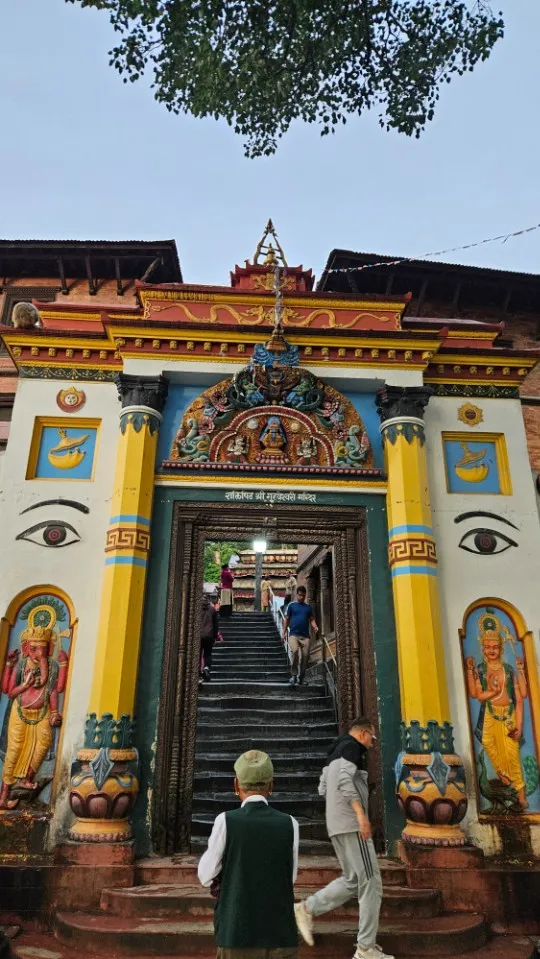

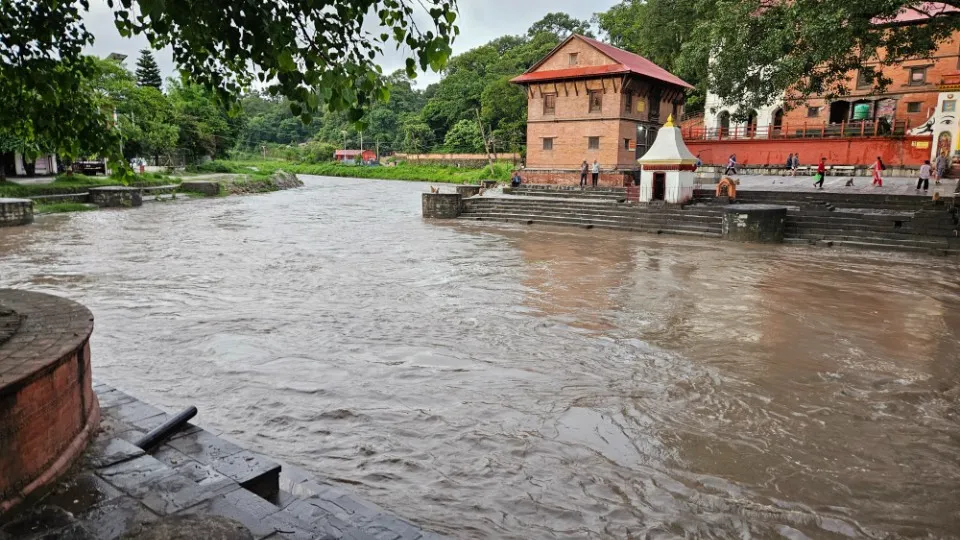
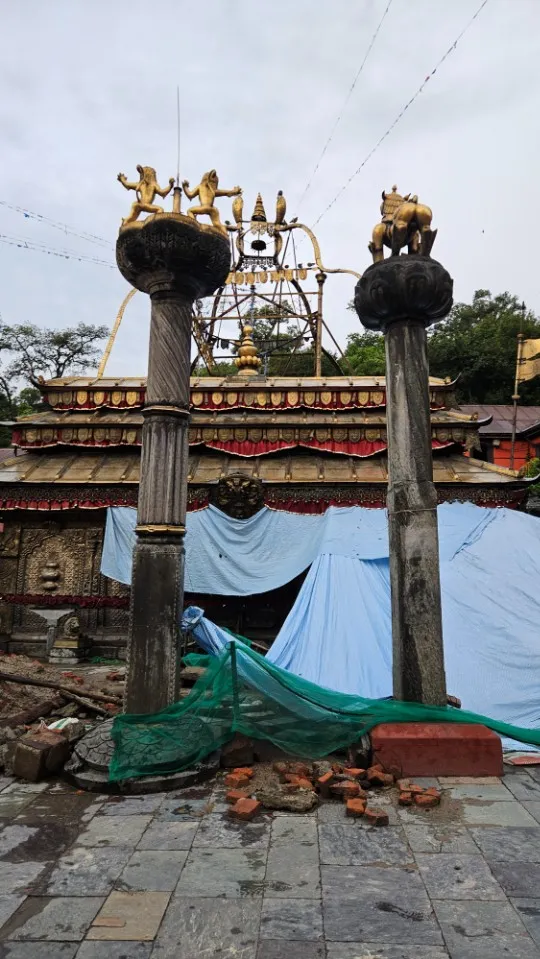
Notes
-
List of things to note:
Visa is free for Indians in Nepal. No need to take passport too. EPIC Voter id is accepted. However, Aadhar card is not accepted
Most shops in Nepal accept Indian Currency. However, only till 100Rs denomination is accepted. 200Rs and 500Rs notes are not accepted
ATMs accept Indian debit cards. Nepali currency can be withdrawn in any ATM.
UPI also works in Nepal
Vegetarian Food is slightly difficult. You might have to search for places which serve only Vegetarian Food.
Mountain Flight is a dream flight that shows the HImalayas. Pre-booking is recommended and the flight depends on weather conditions. Please check for refund status.
Lots of hotels are available in Kathmandu and Pokhara
Muktinath temple is on the other side of Pokhara. In case of Muktinath plan, please add another 2 days to the vacation.
Shopping in expensive in Pokhara lakeside. Instead, the same shopping can be done in Pashupatinath area in Kathmandu.
FAQ
-
Is visa required for Nepal?
No. Visa is free for Indians. Even passport is not needed. You EPIC Voter id is sufficient to get an entry. However, Aadhar card is not accepted as a valid Id.
-
Is currency exchange needed?
No. Most shops accepts Indian currency upto 100Rs and lower denominations. 200Rs and 500Rs notes are not accepted. One can withdraw the Nepali currency in any ATM. This is required for smaller shops.
-
How is the weather in Nepal? What is the best time to visit?
The best time to visit Nepal is March to May and September to November. The monsoon starts in June and the winter starts in November. It is usually sunny so it is recommended to carry umbrella even if it is sunny. For trekking, the timelines might differ. Please check with your travel agent for trekking times.
-
How is the food in Nepal?
Nepal has all types of food available. The coffee culture is fairly vibrant and one can see a lot of small coffee shops especially in Pokhara. People looking only for vegetarian food might find it difficult.
More from Anoop
A traveler who loves to experience different countries, cultures and places.
Anoop's Turas.app profile